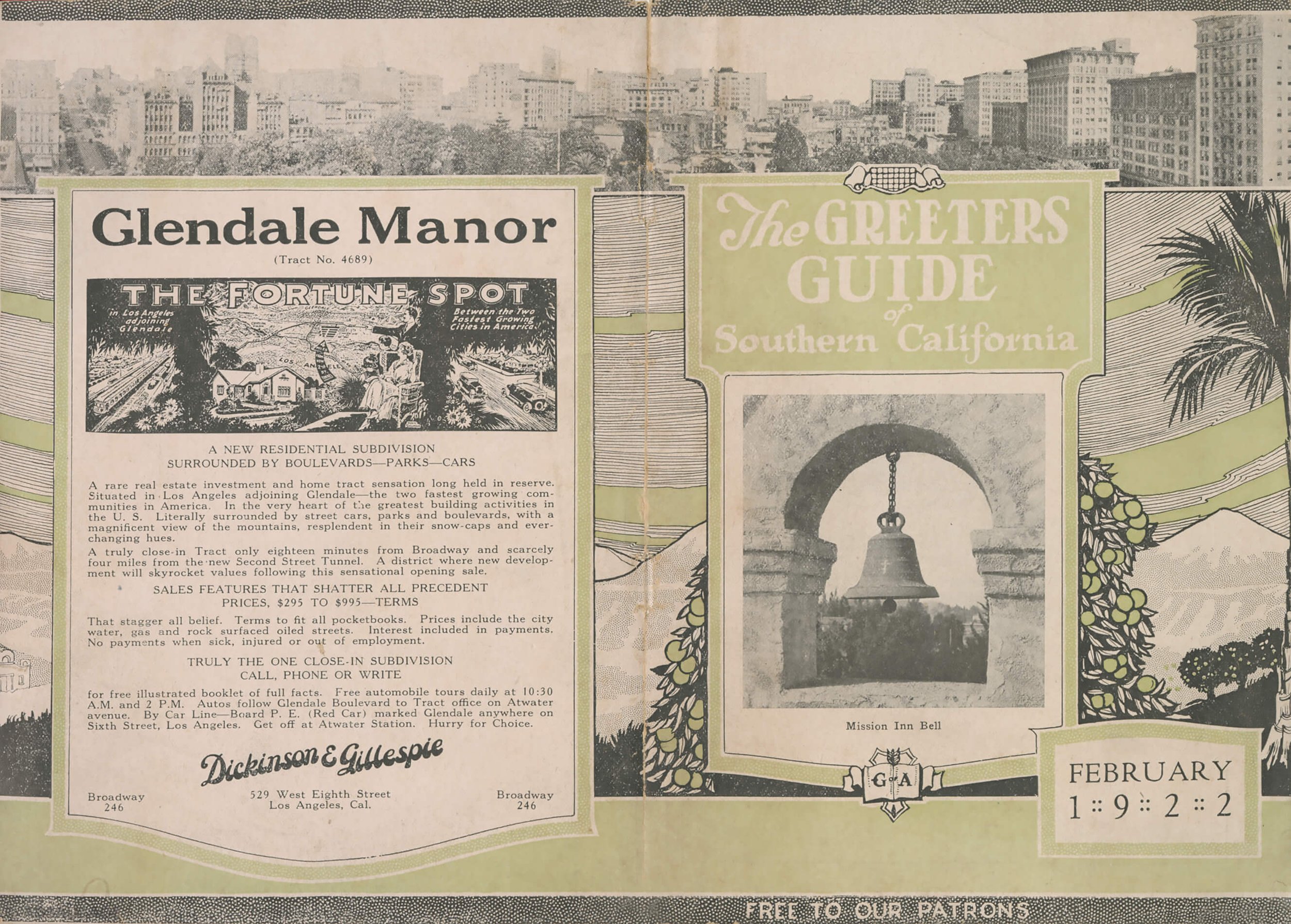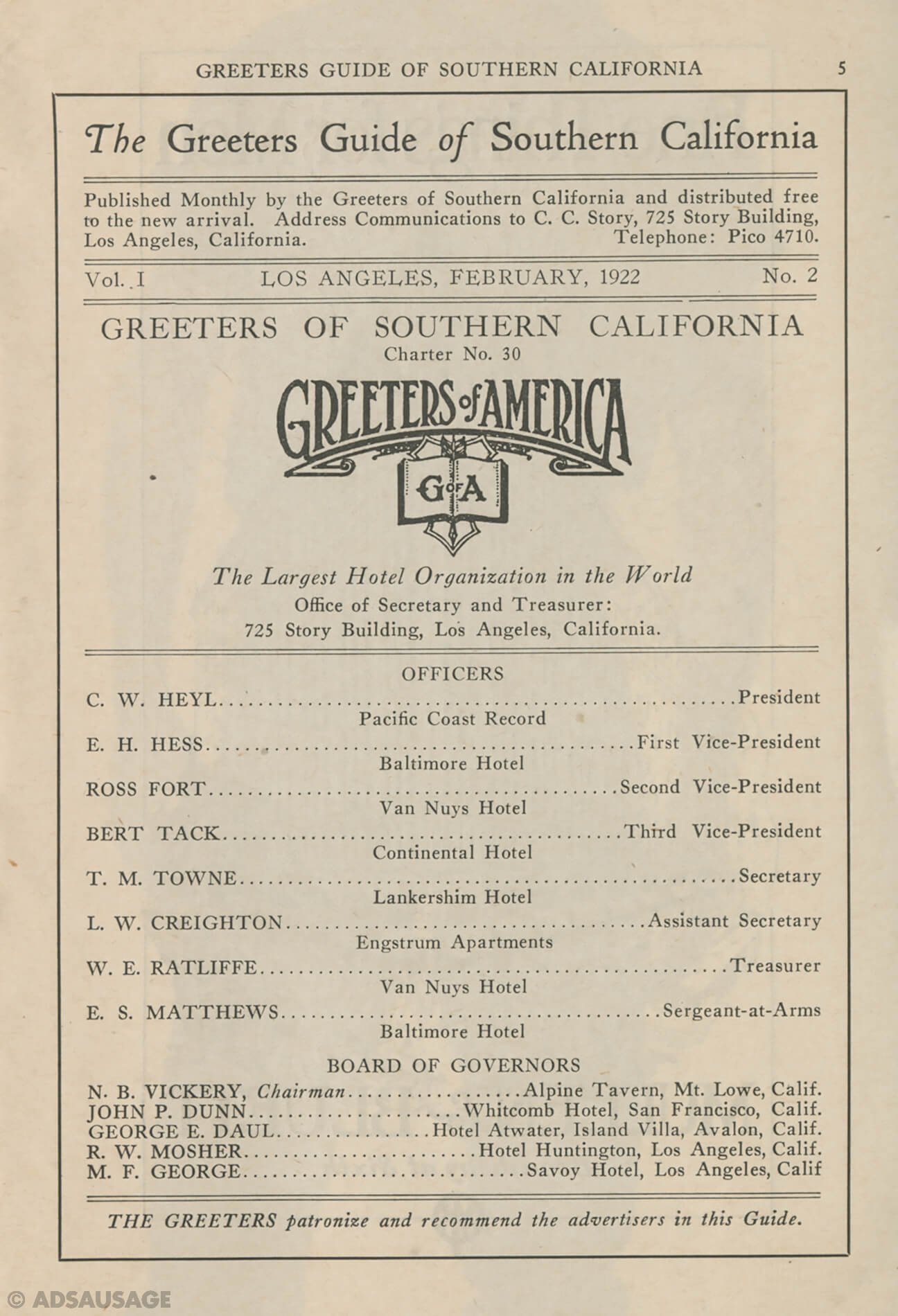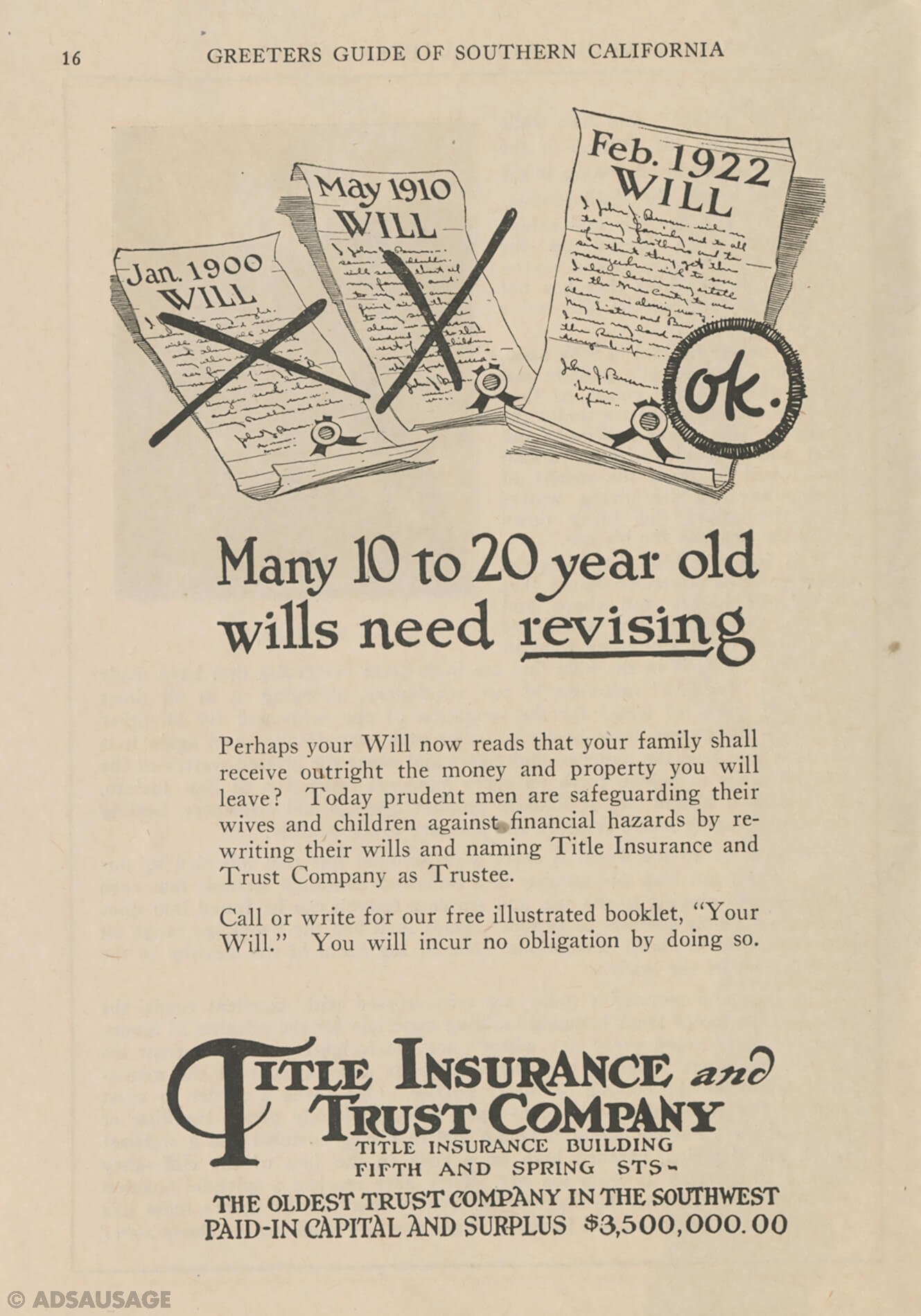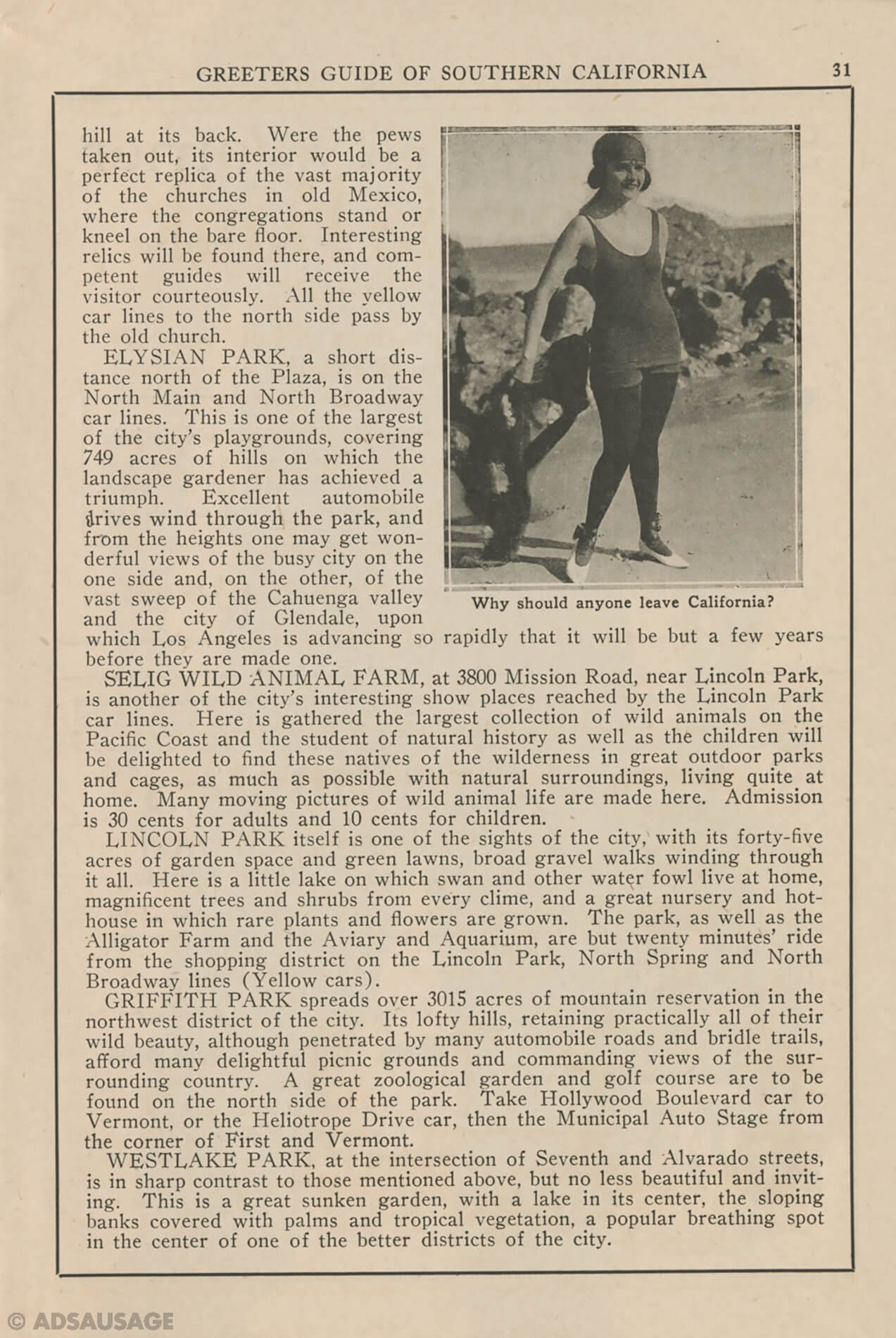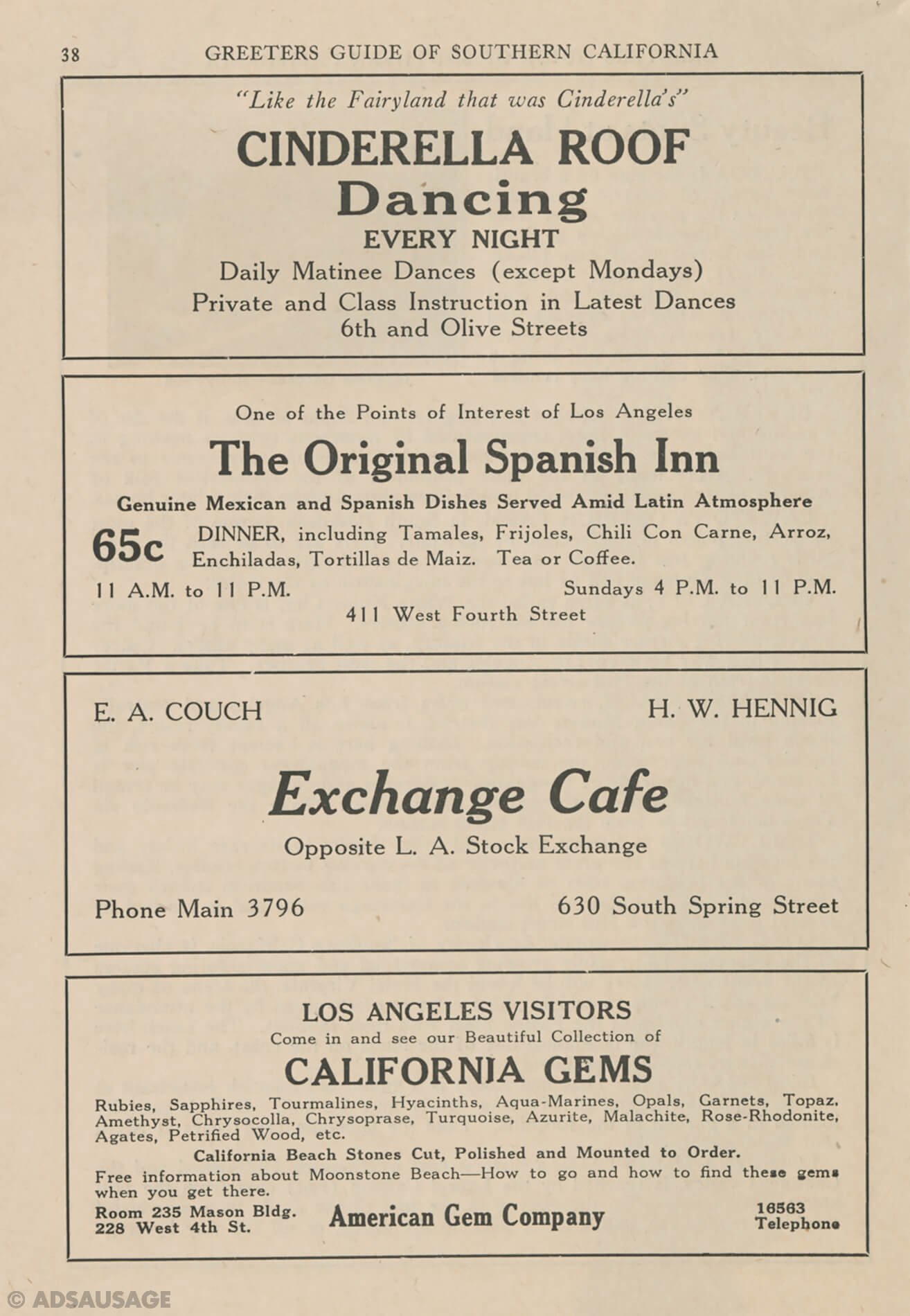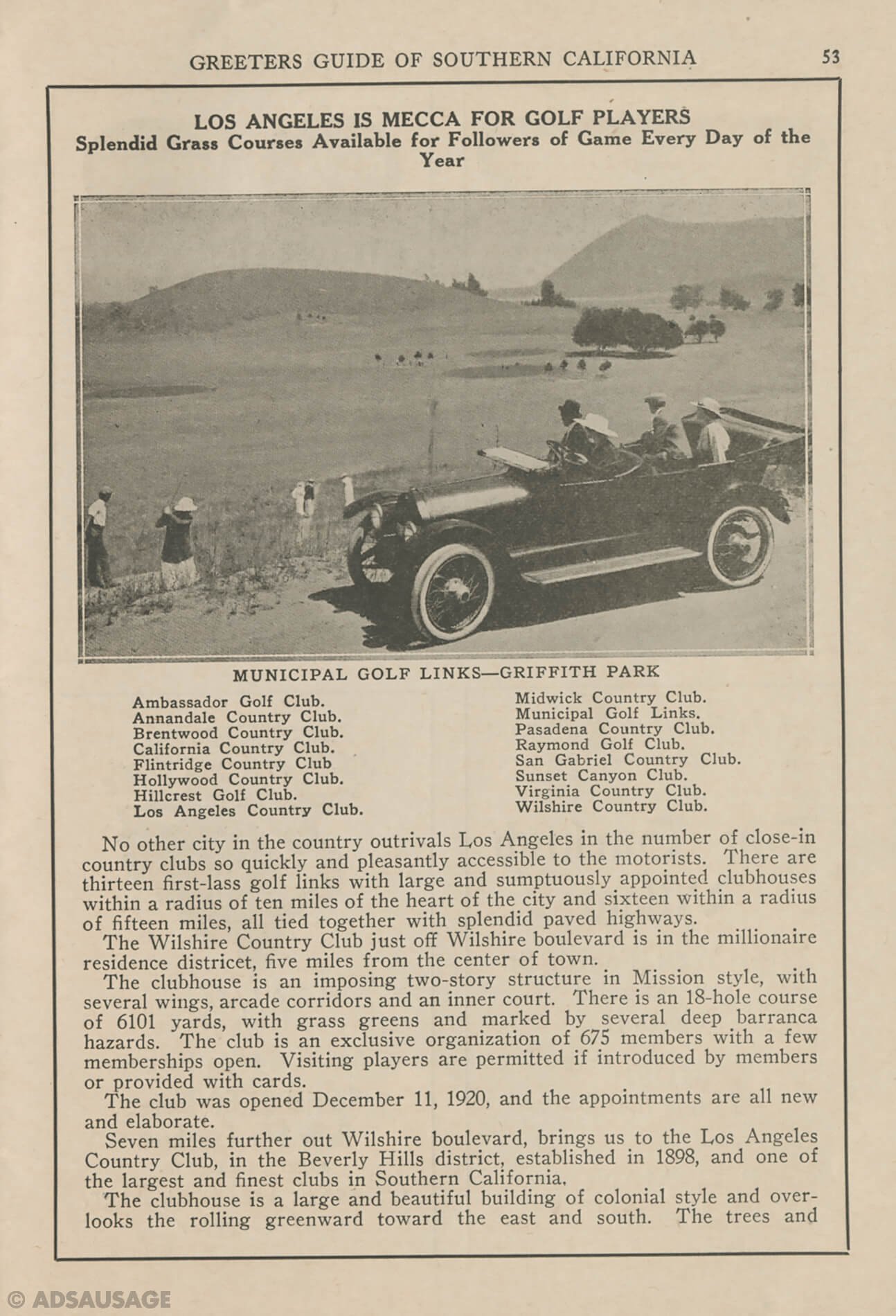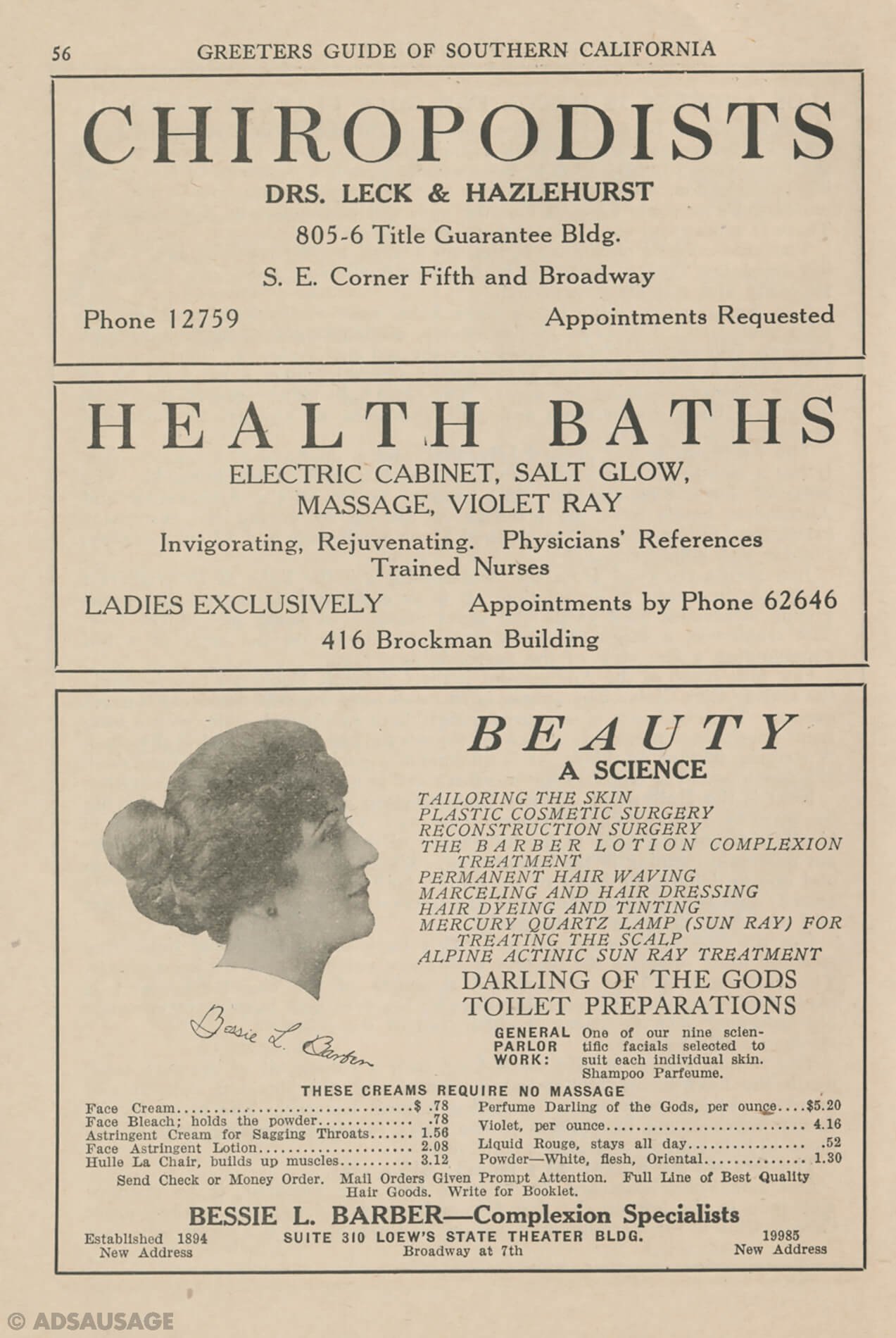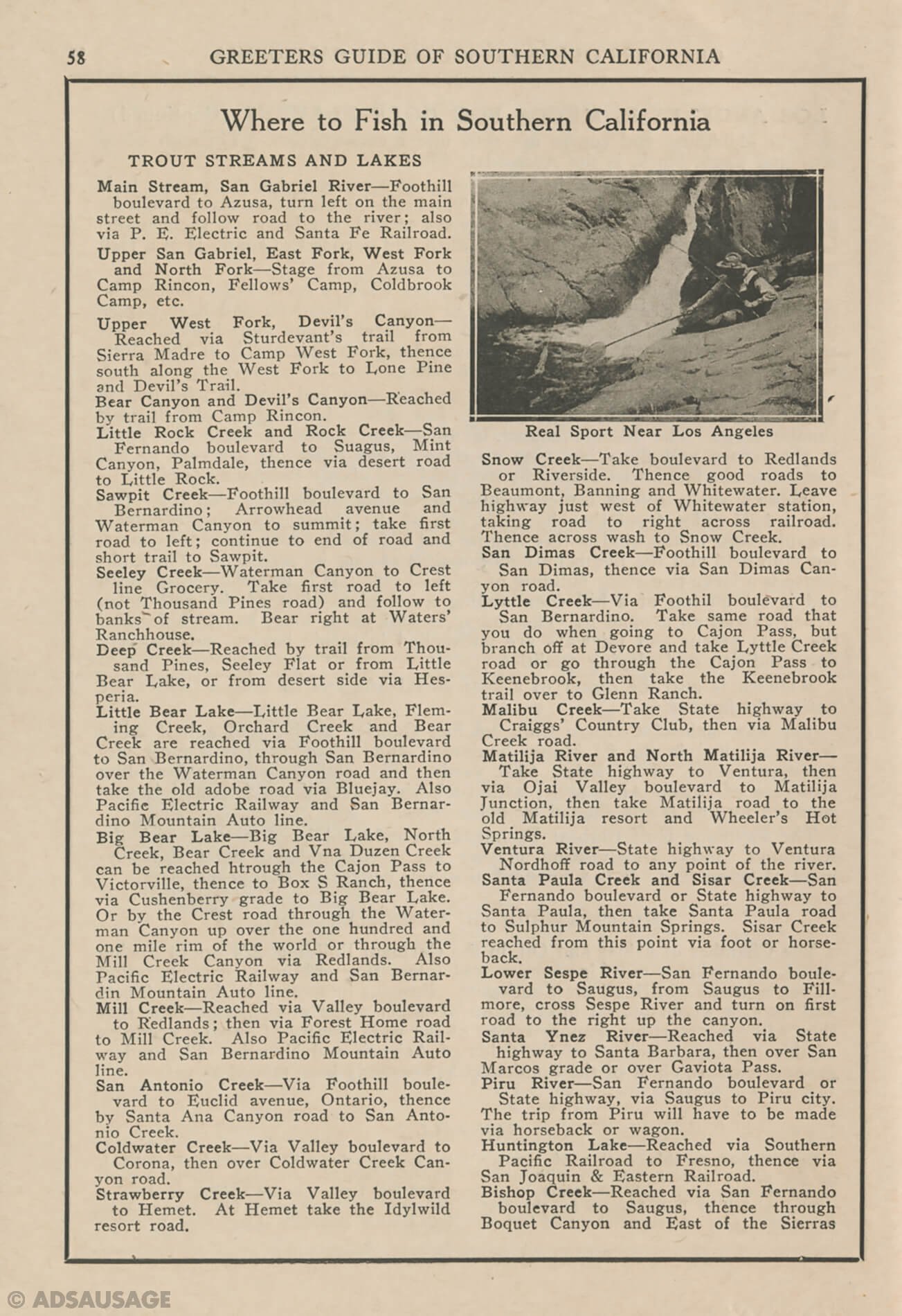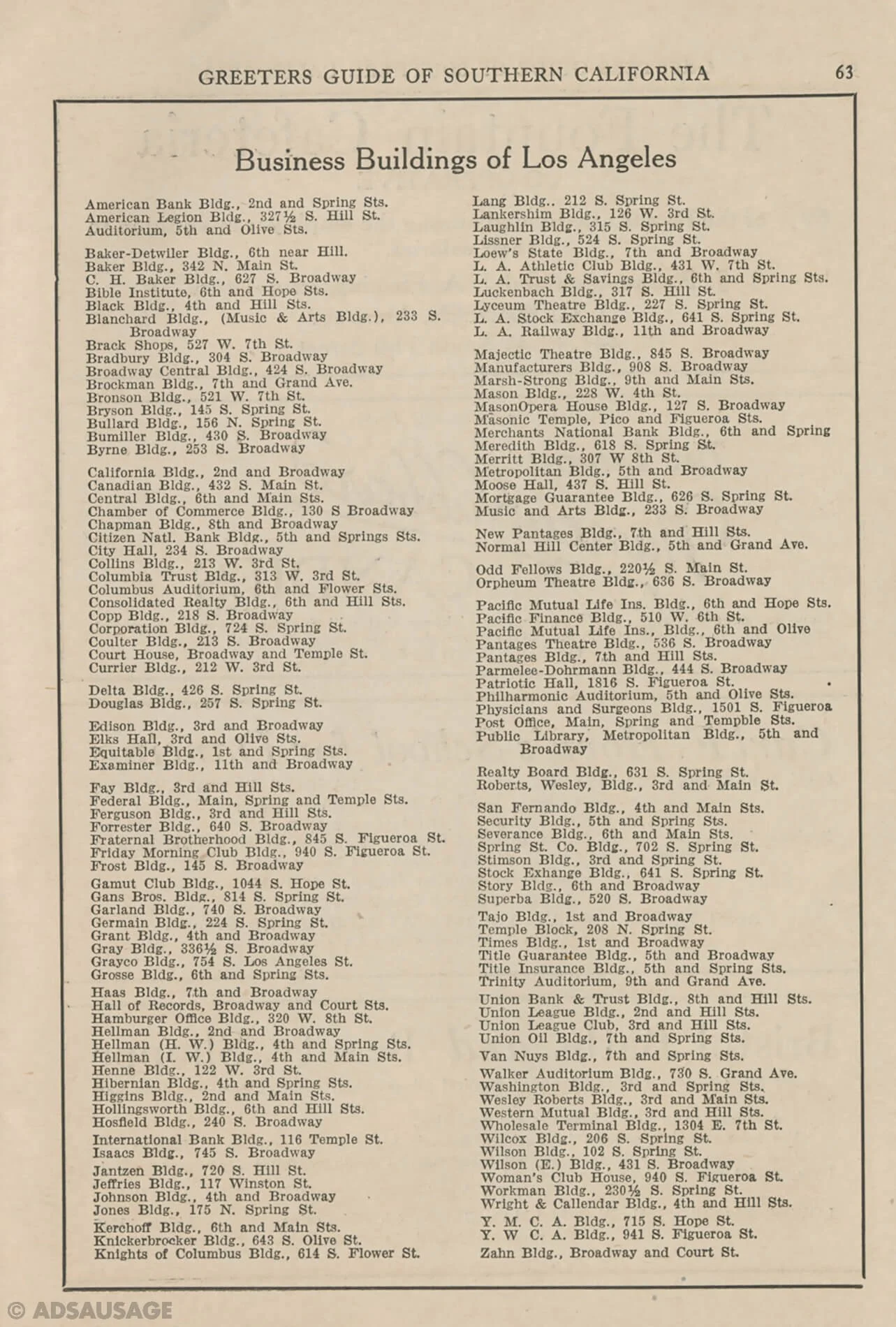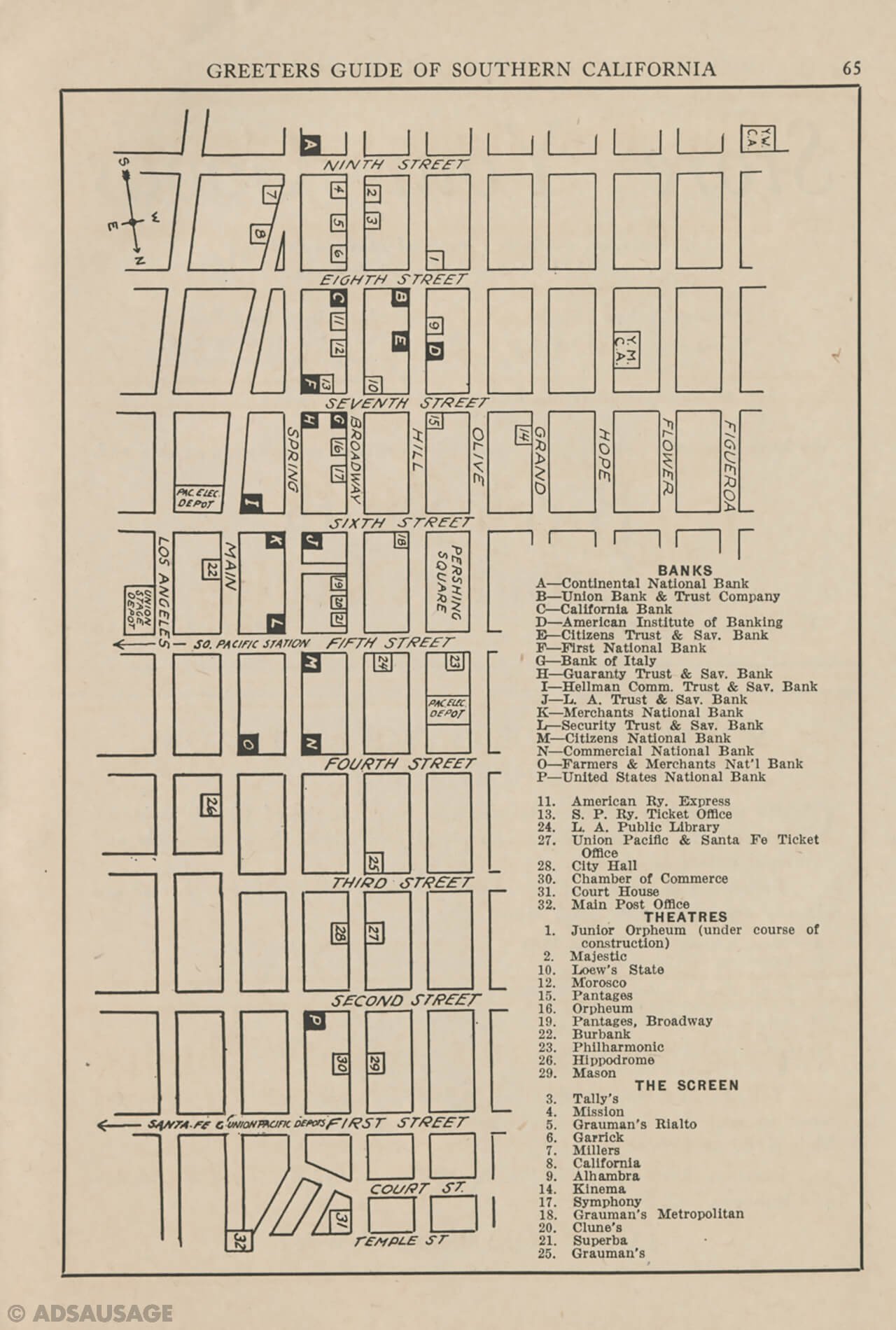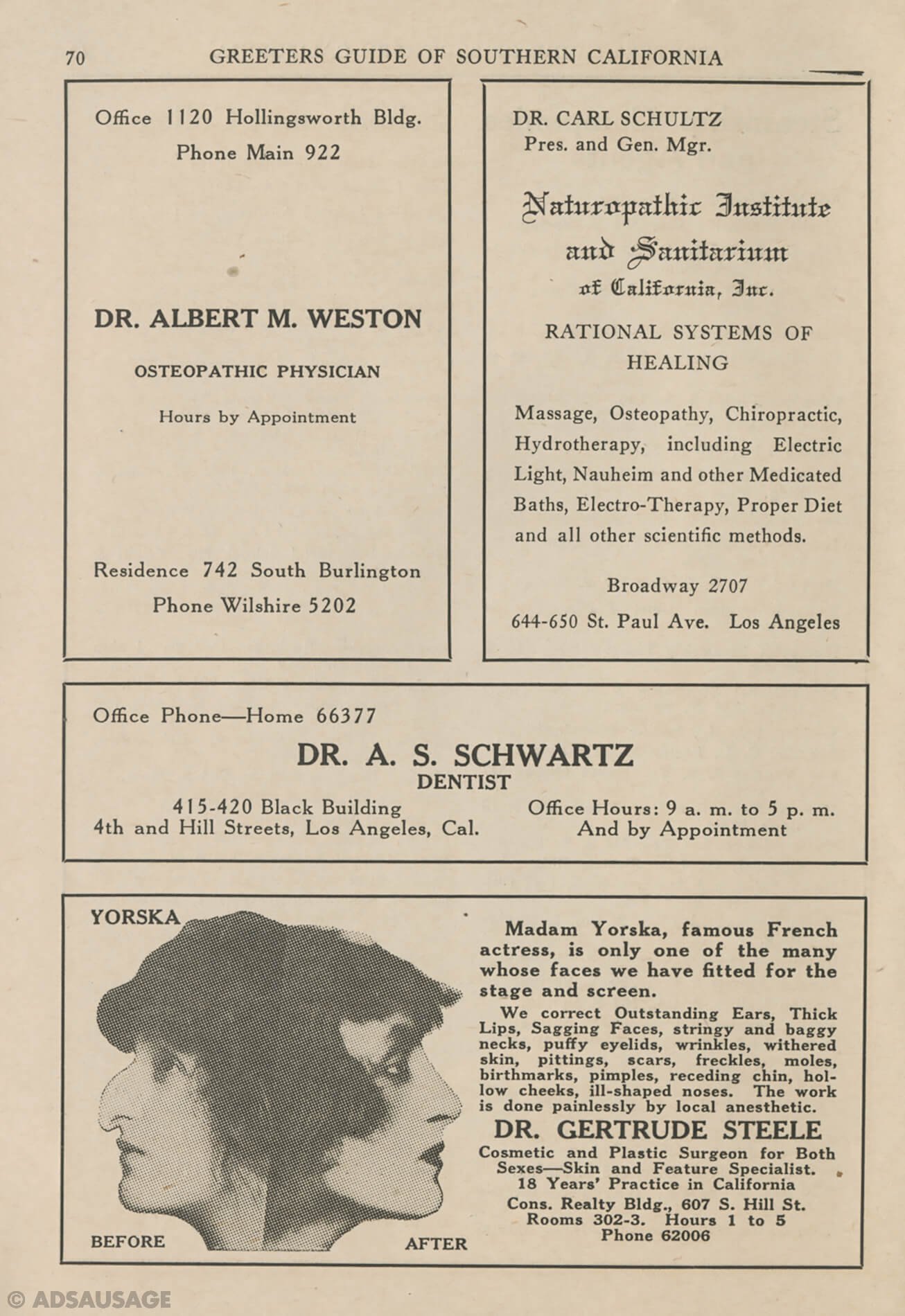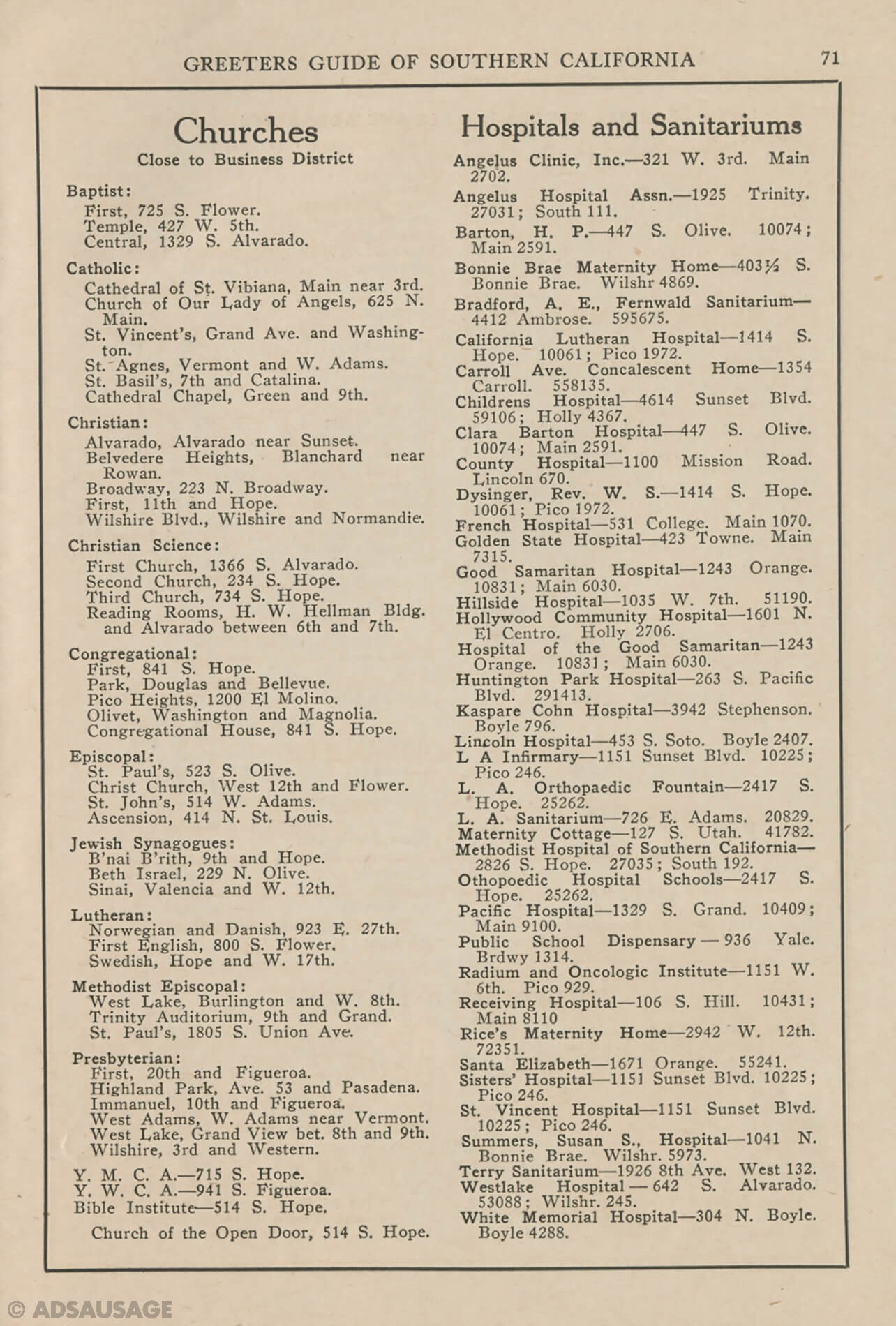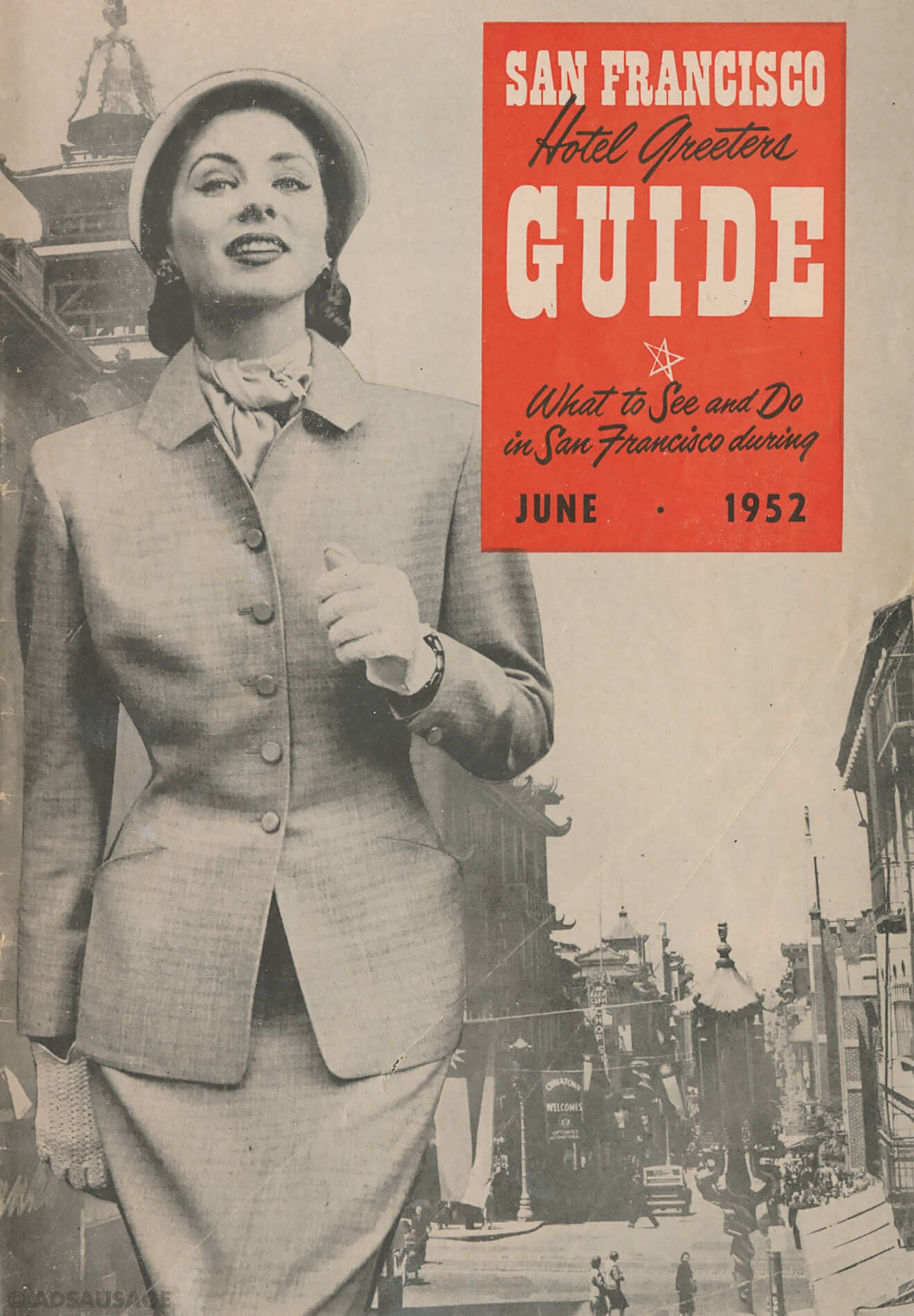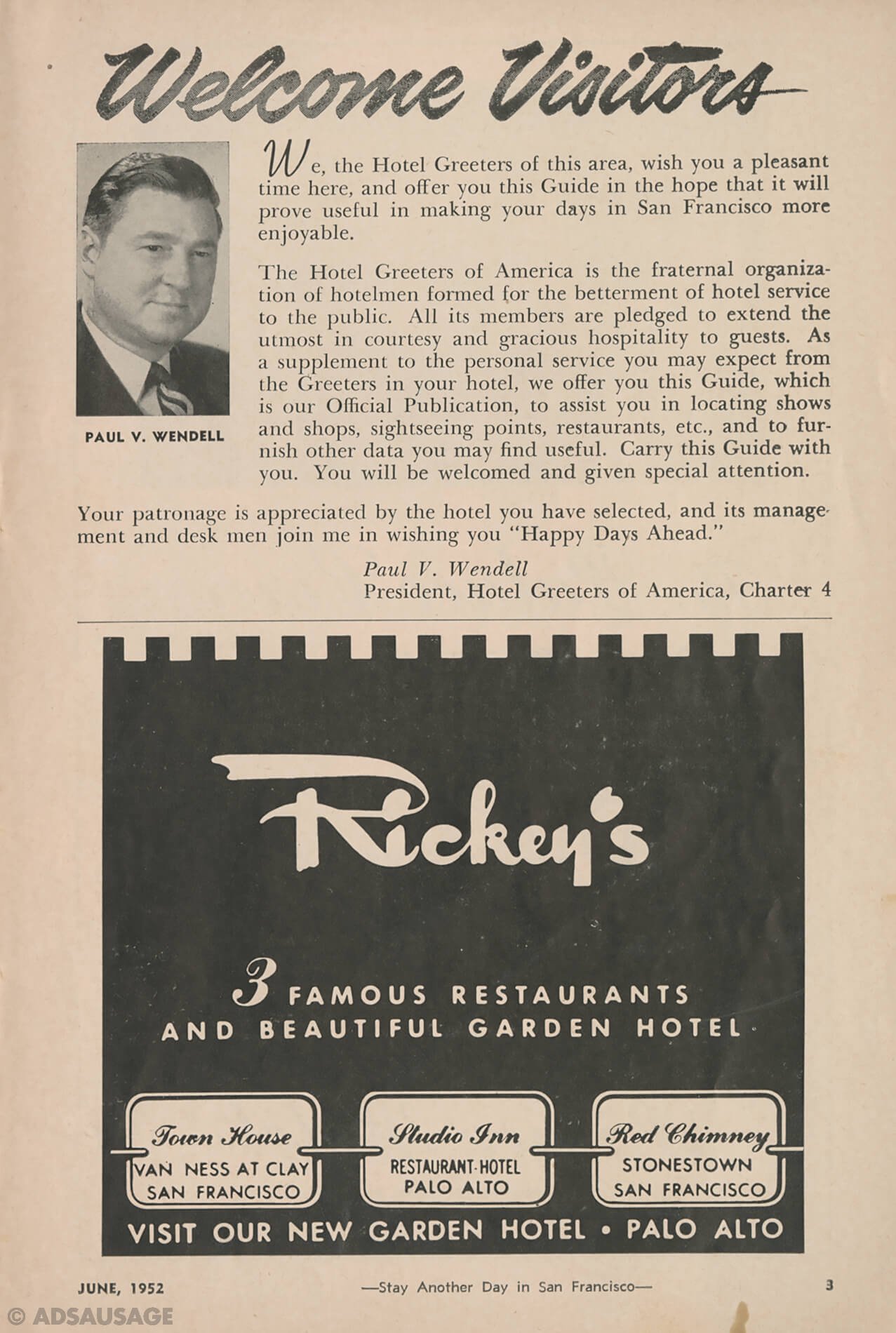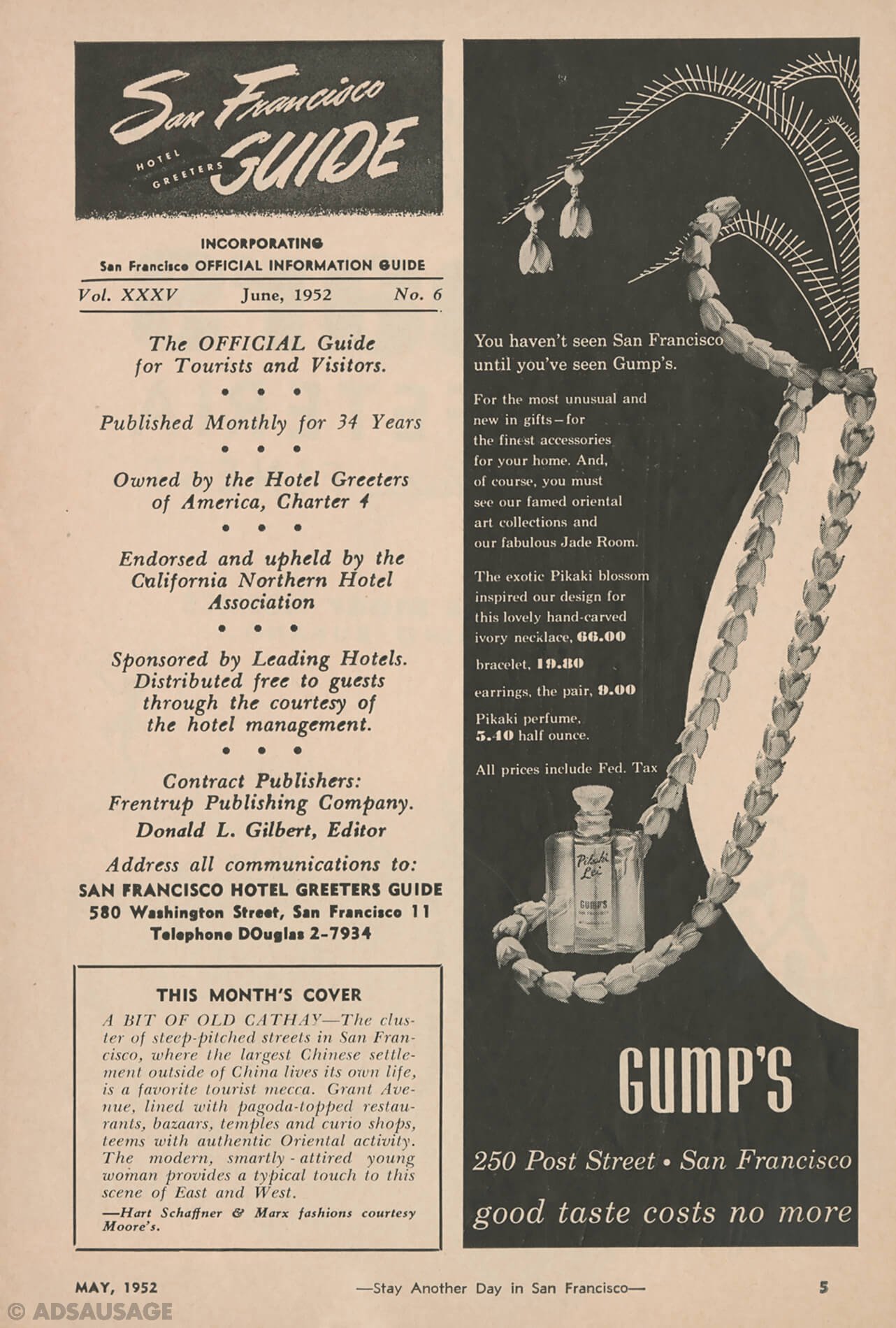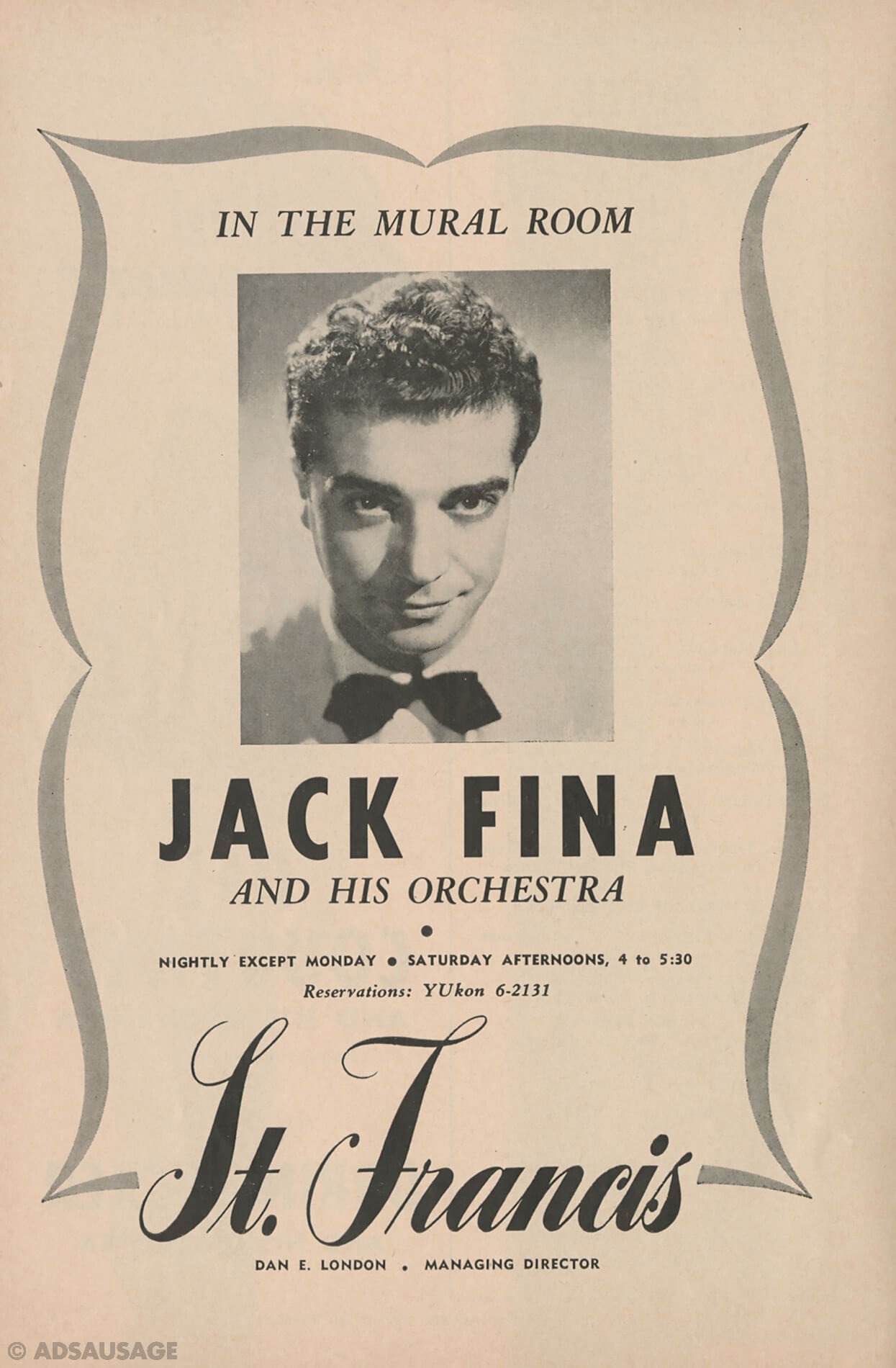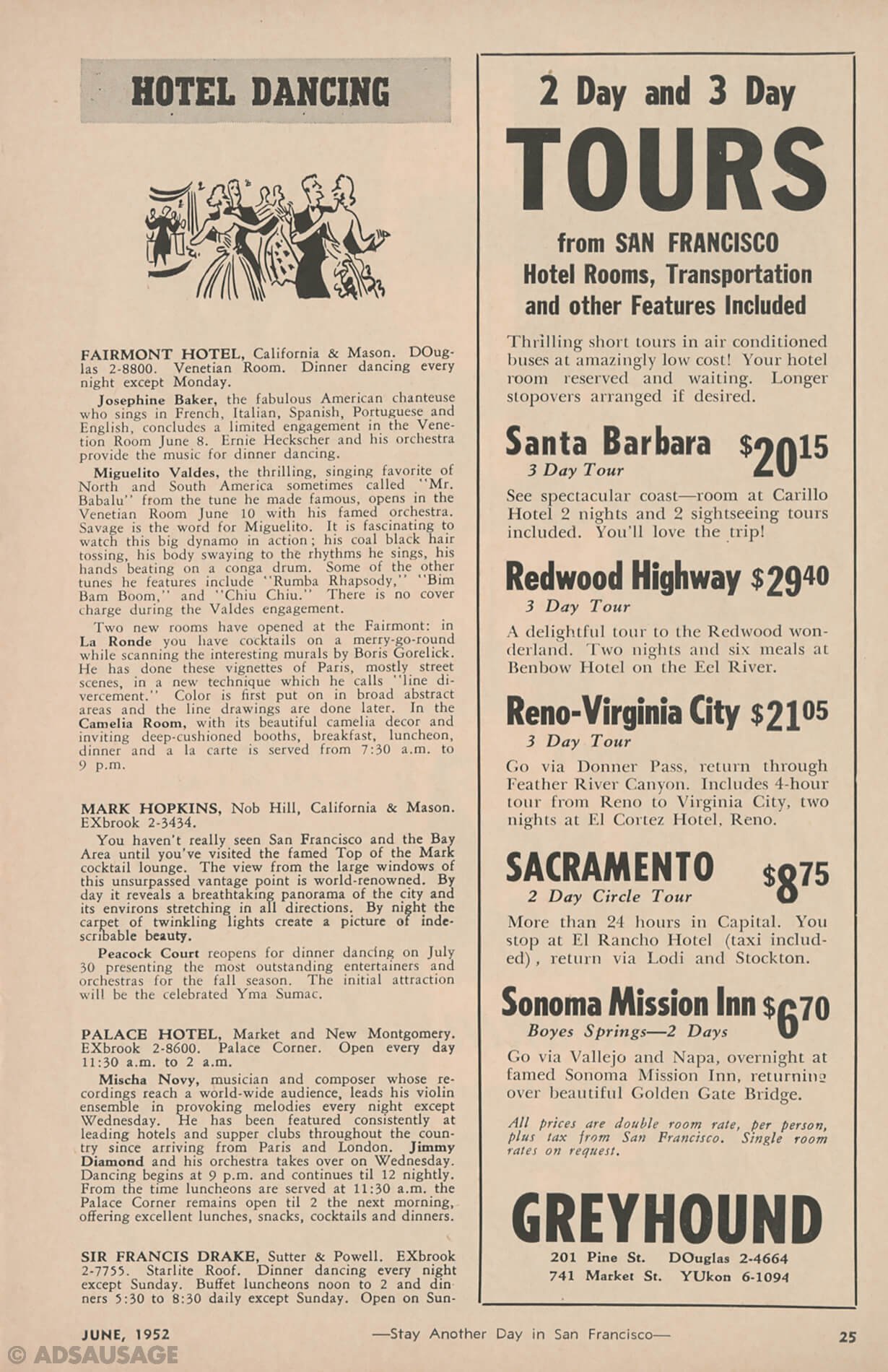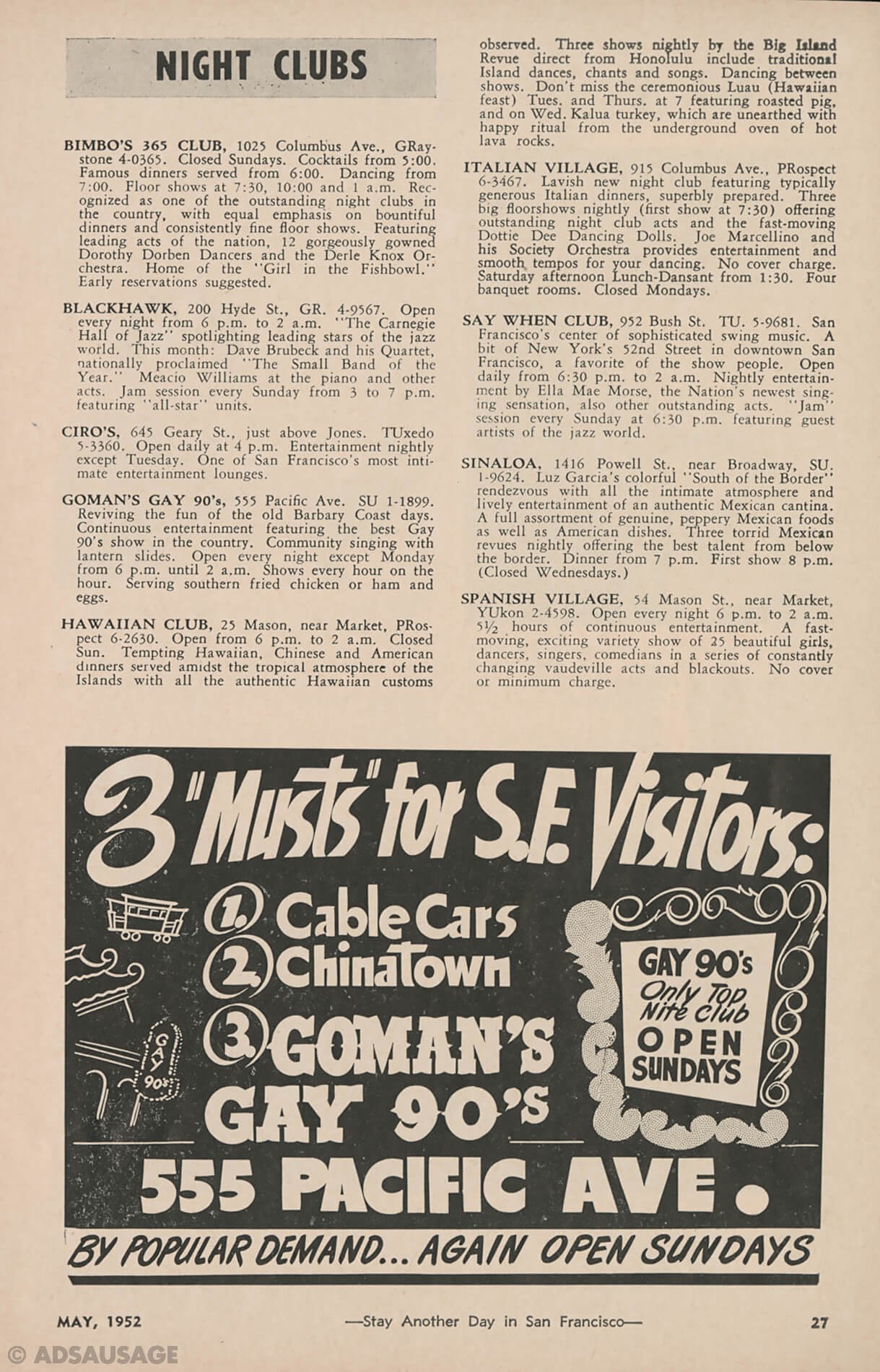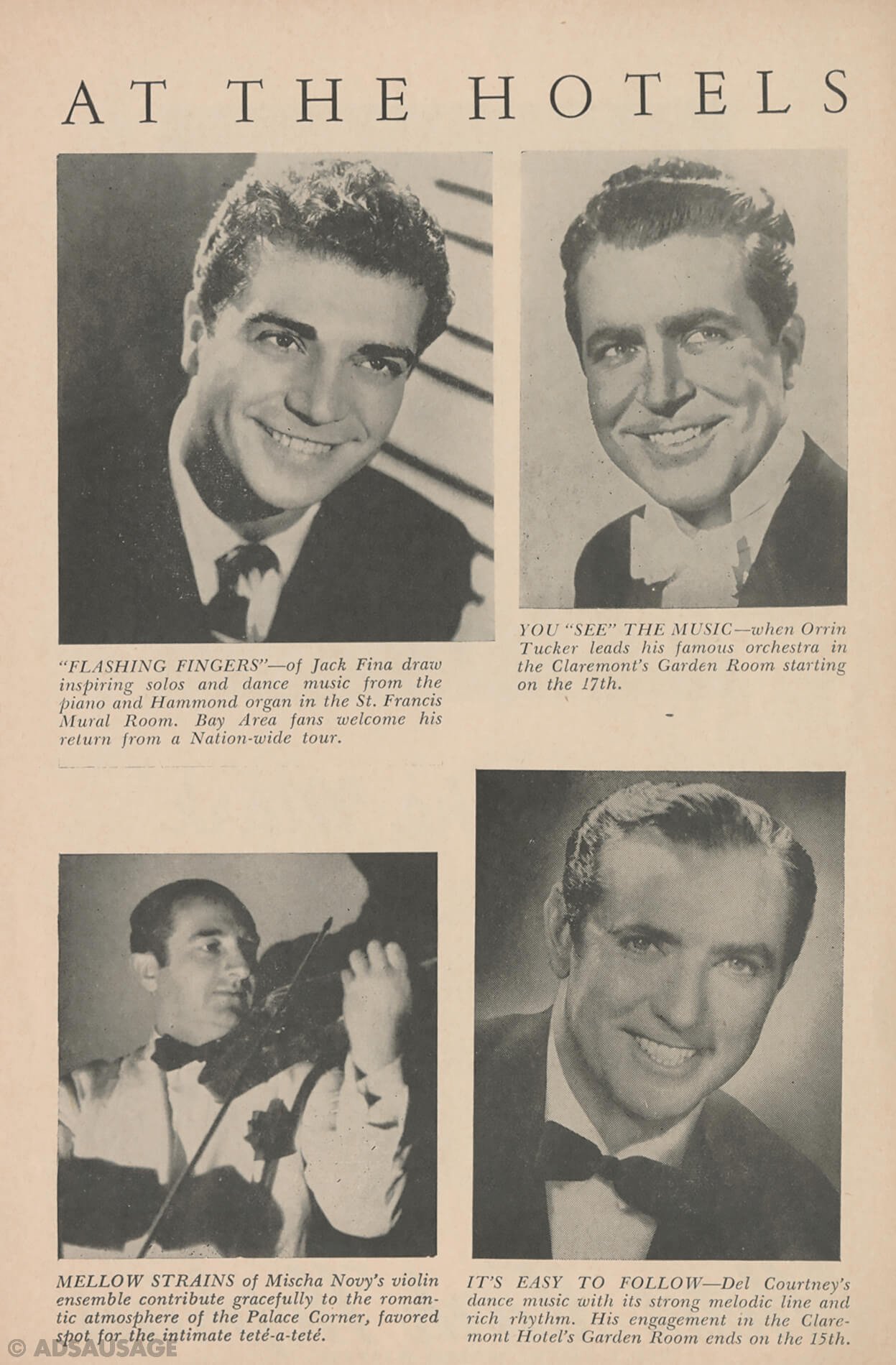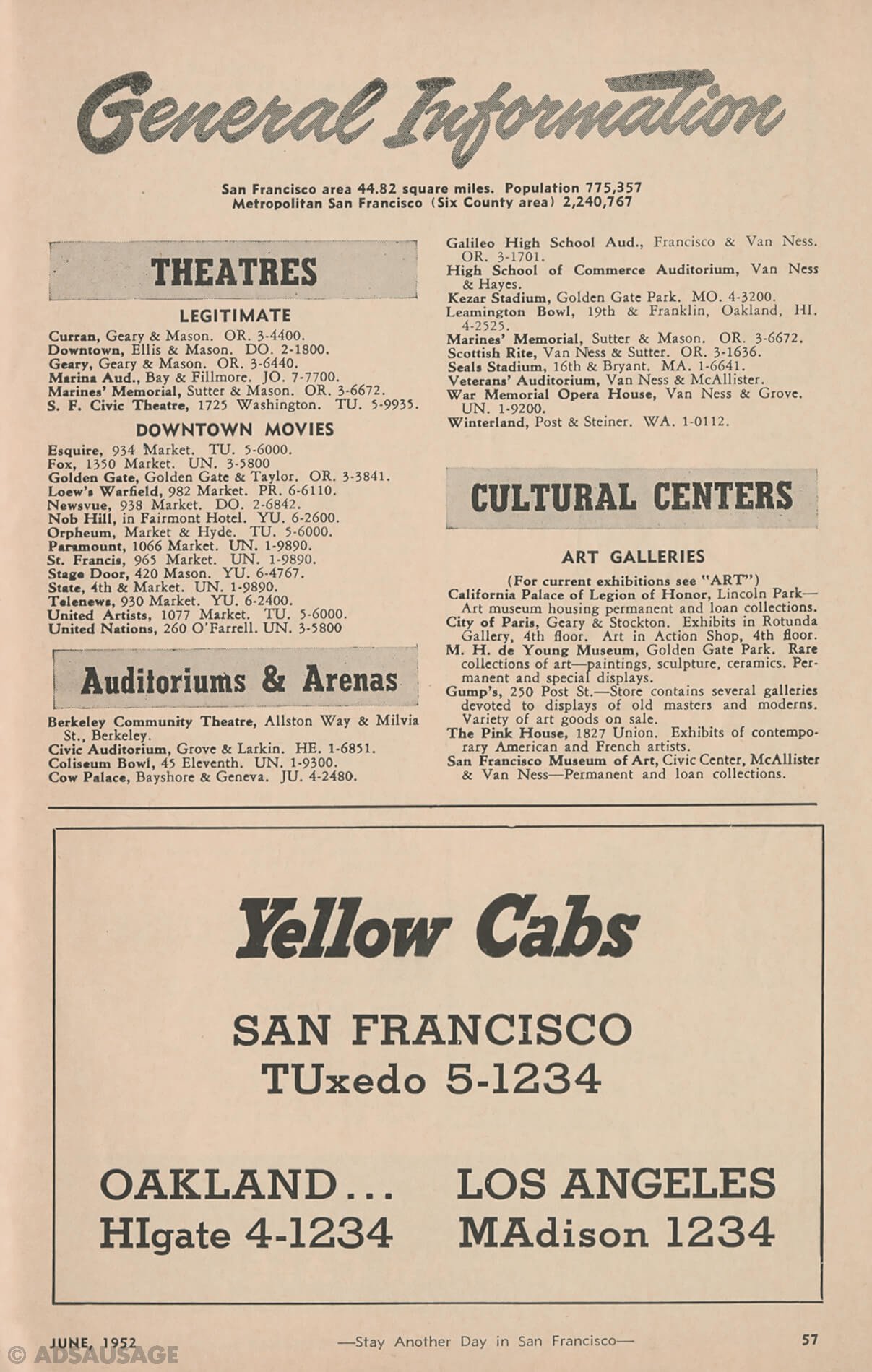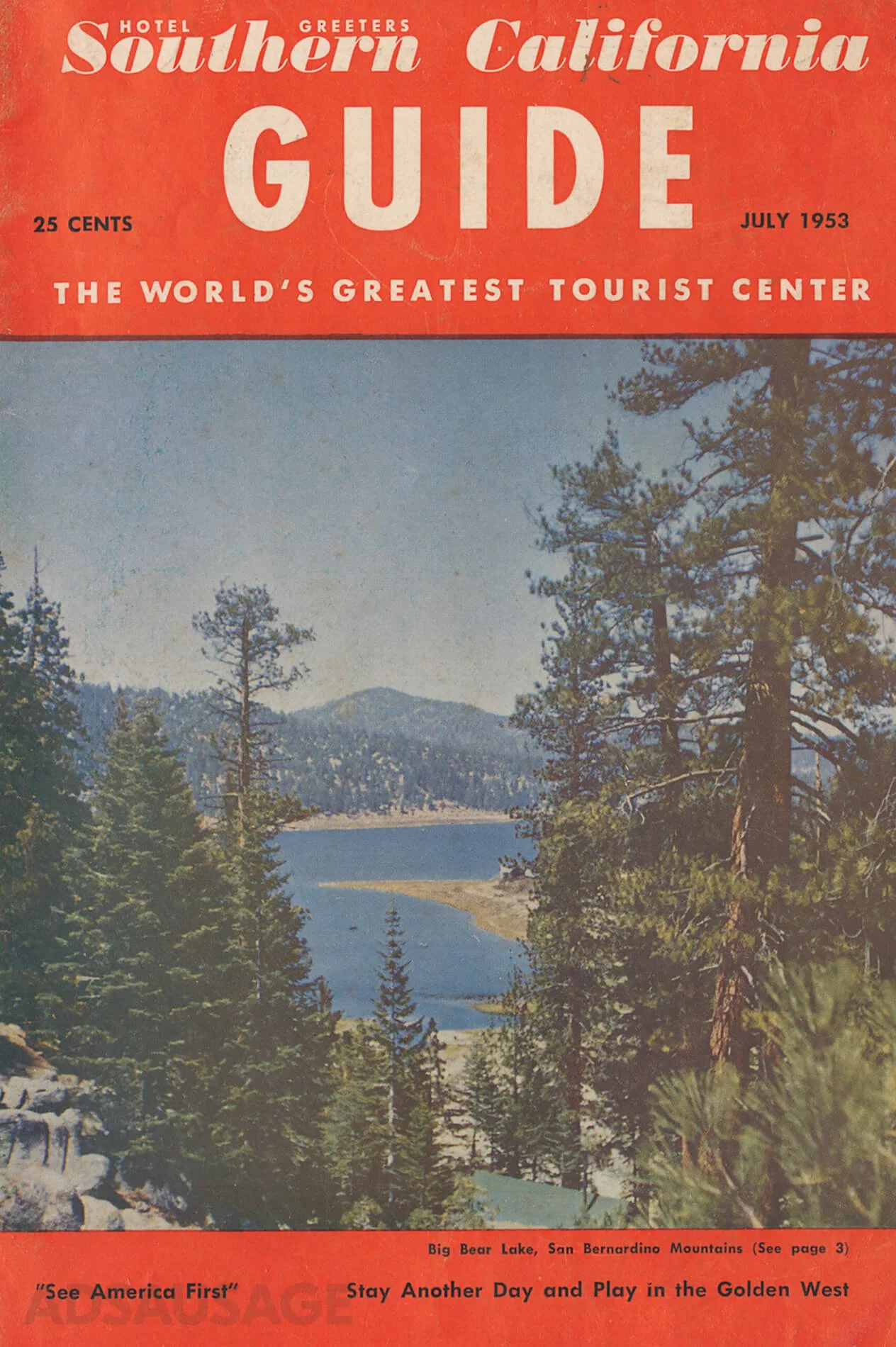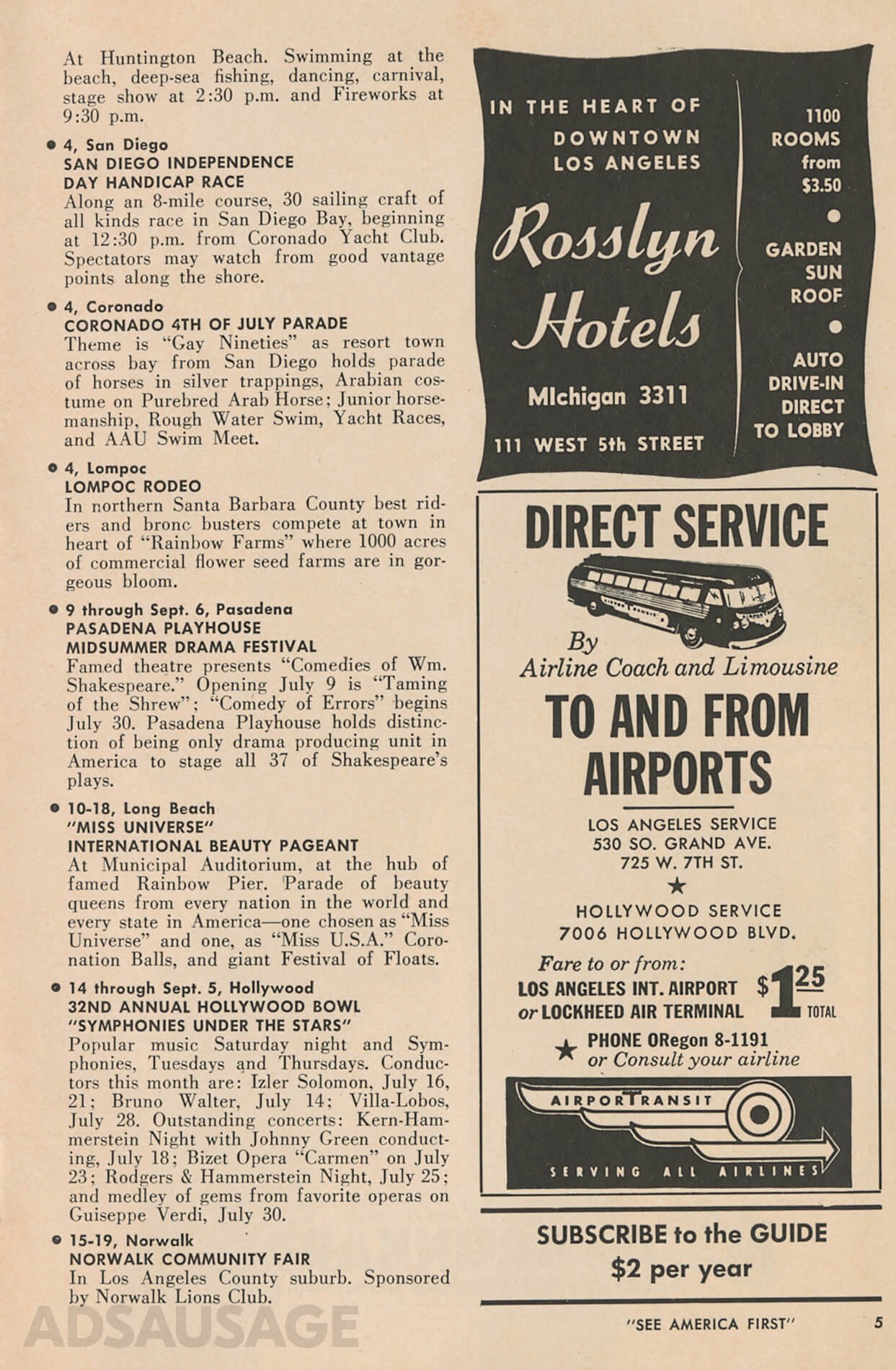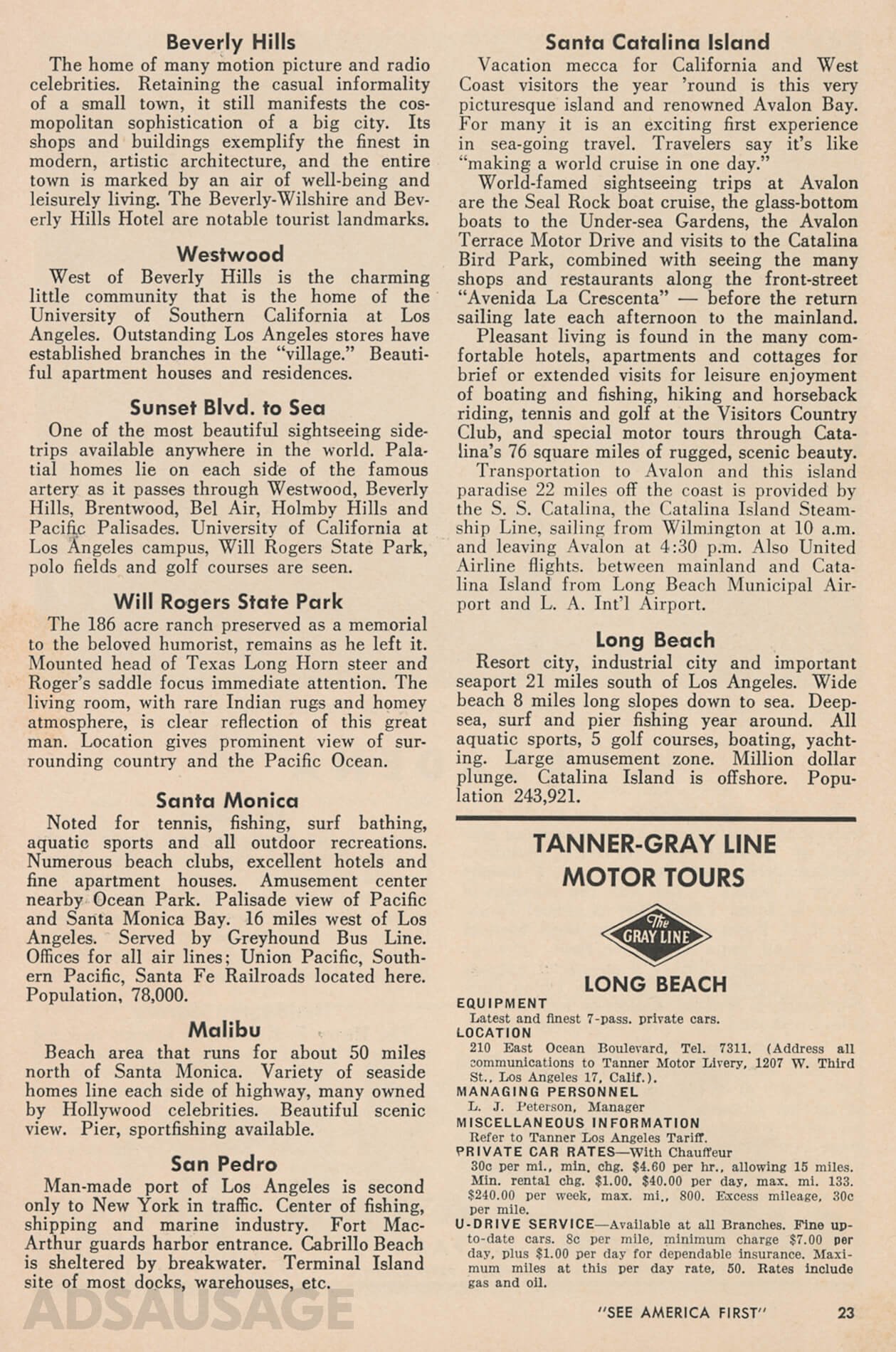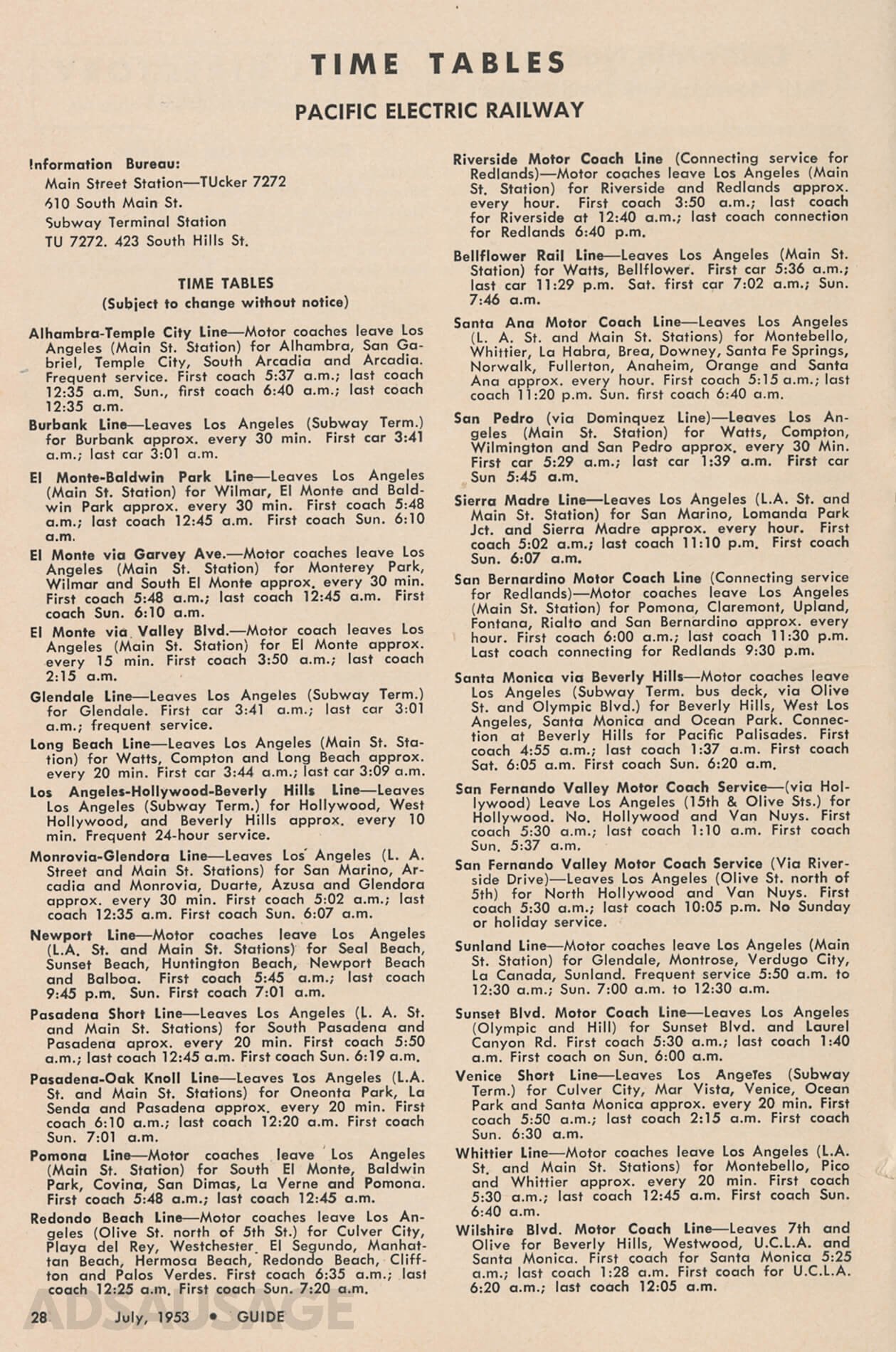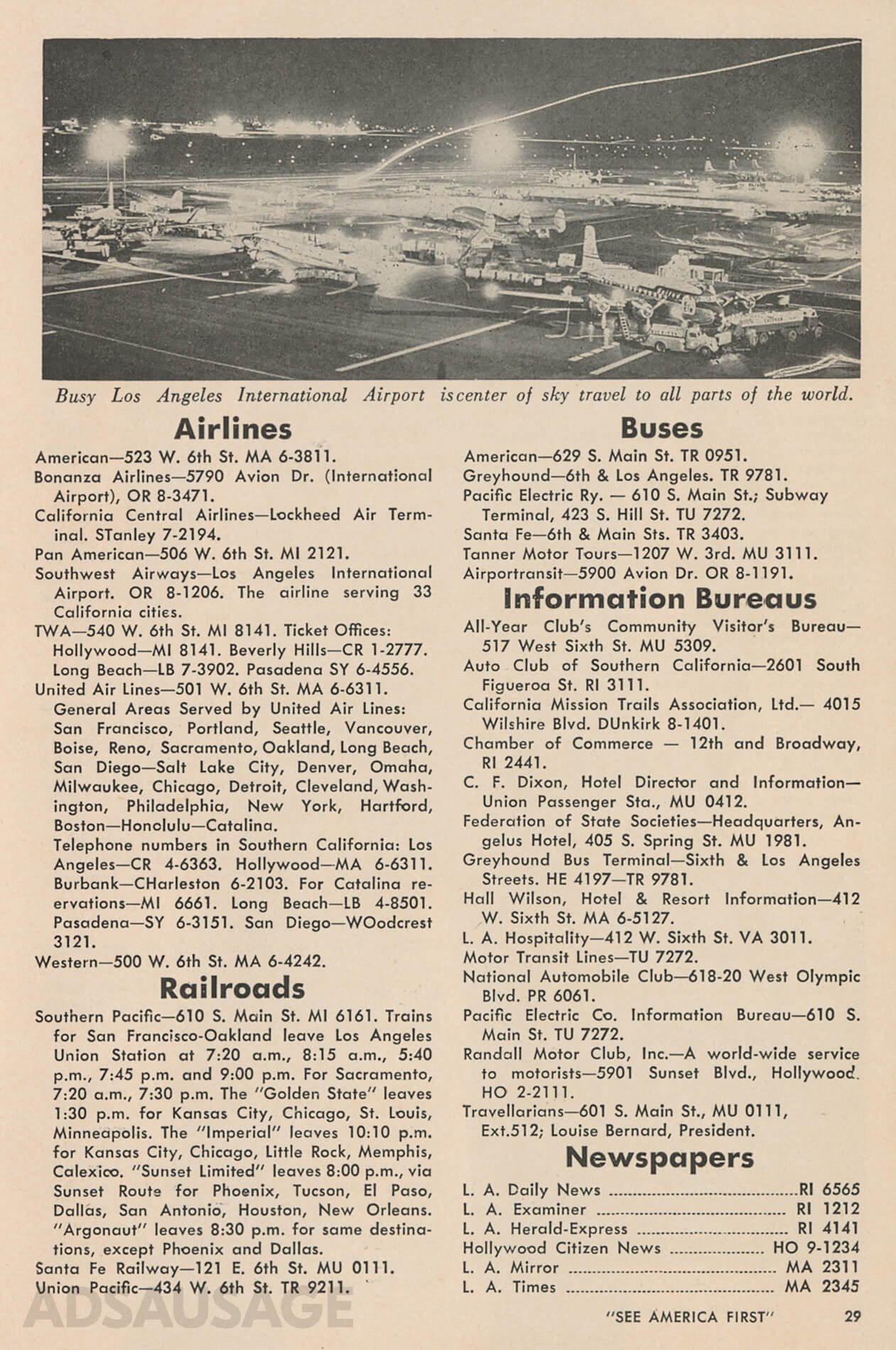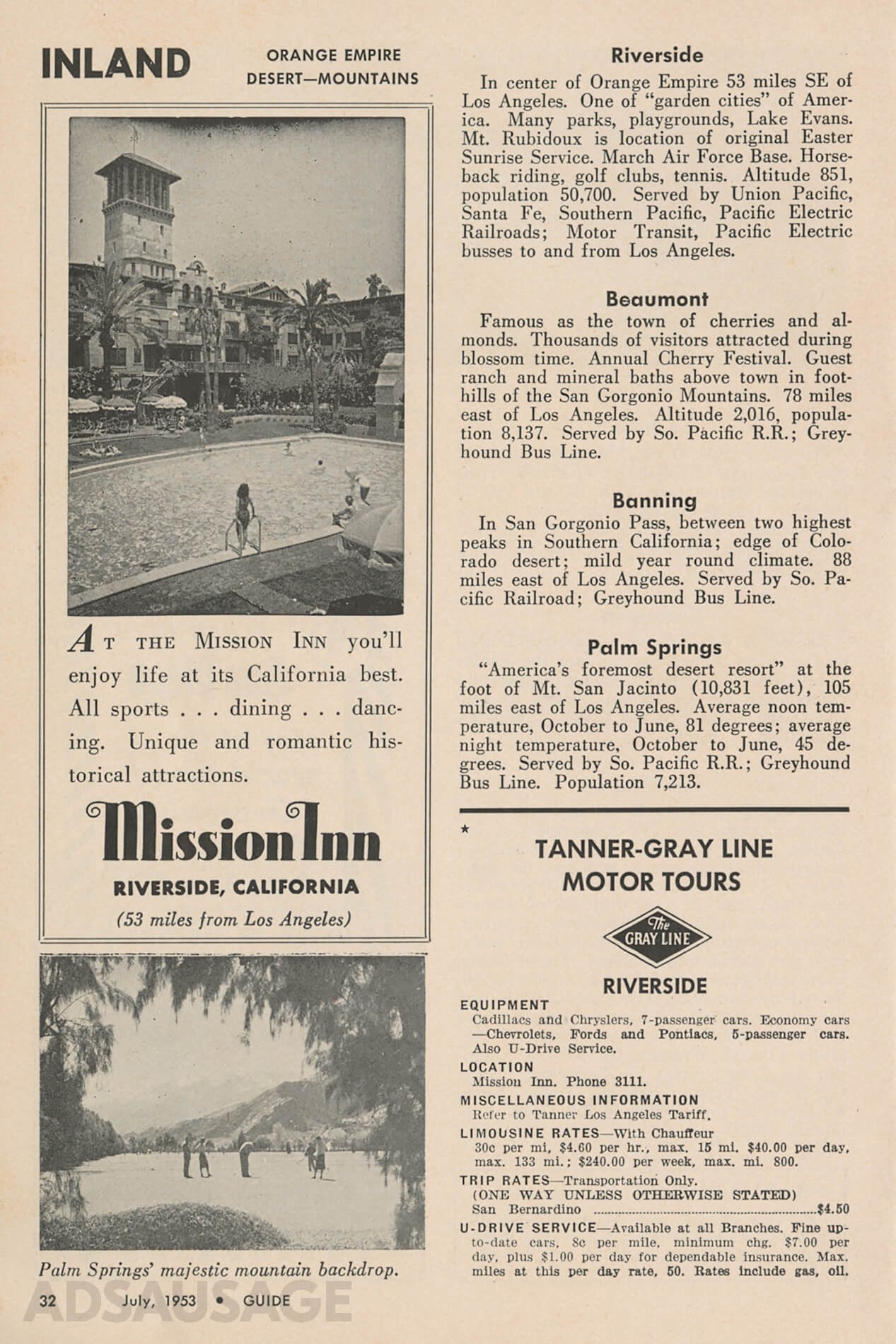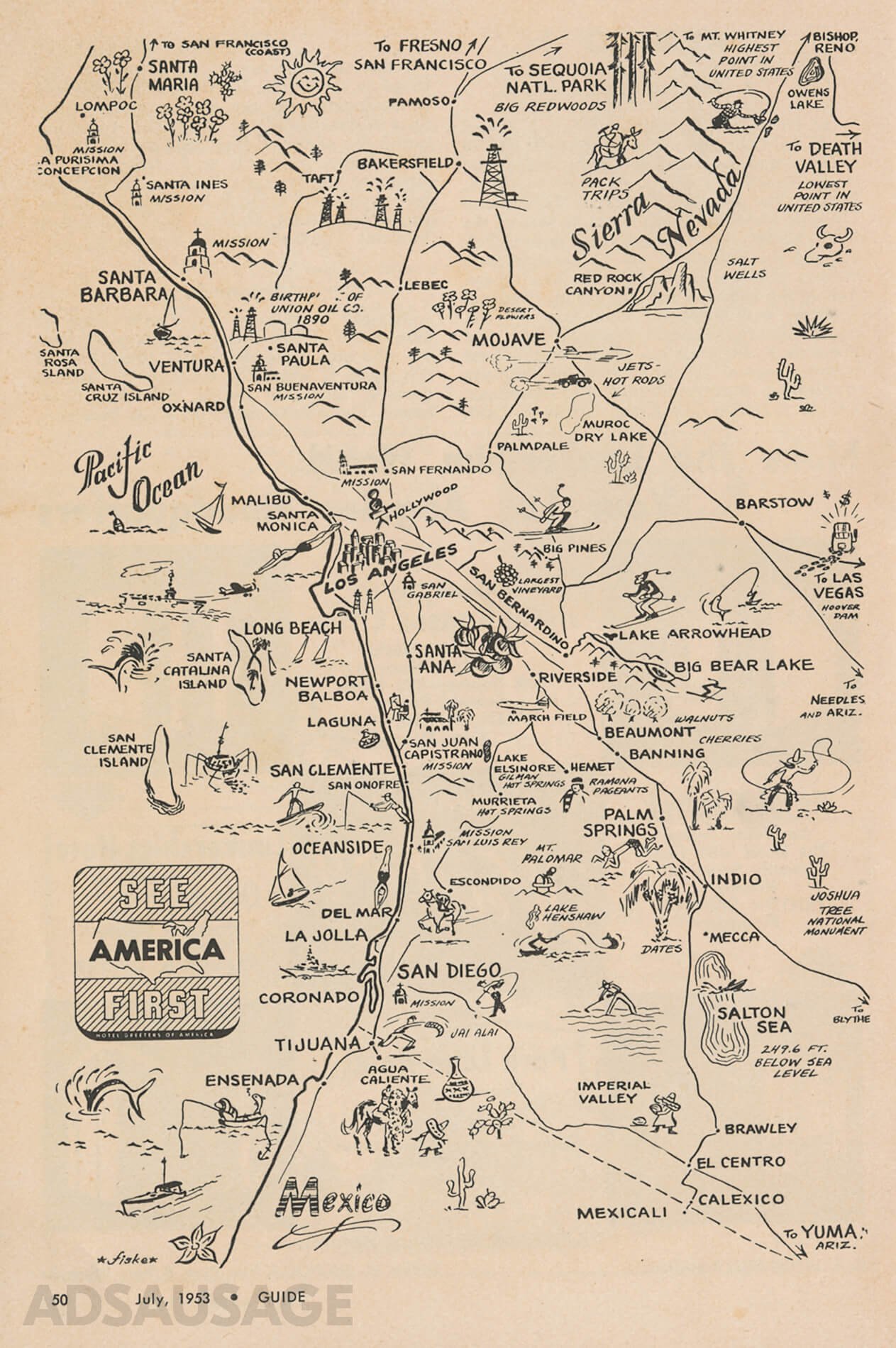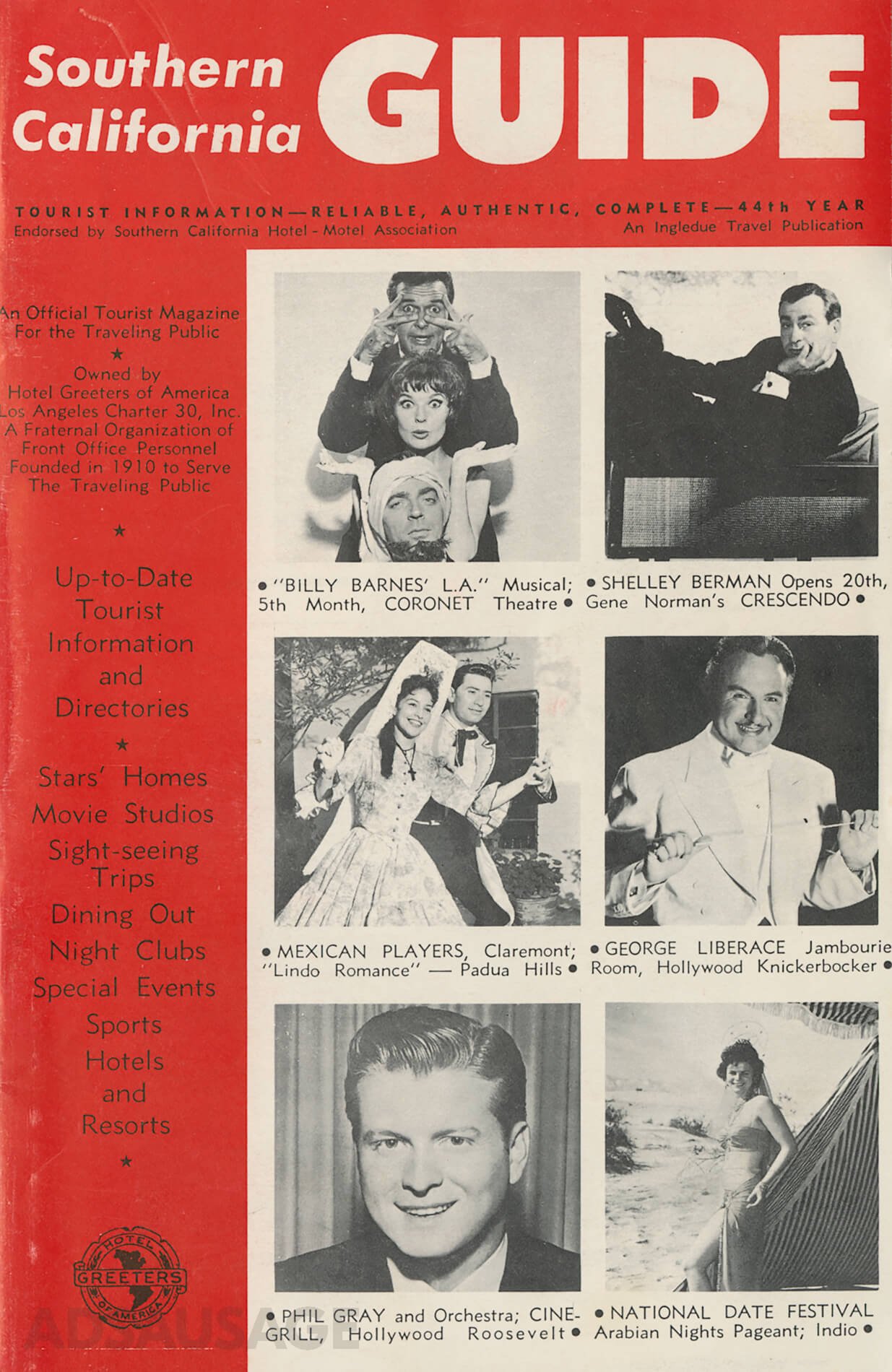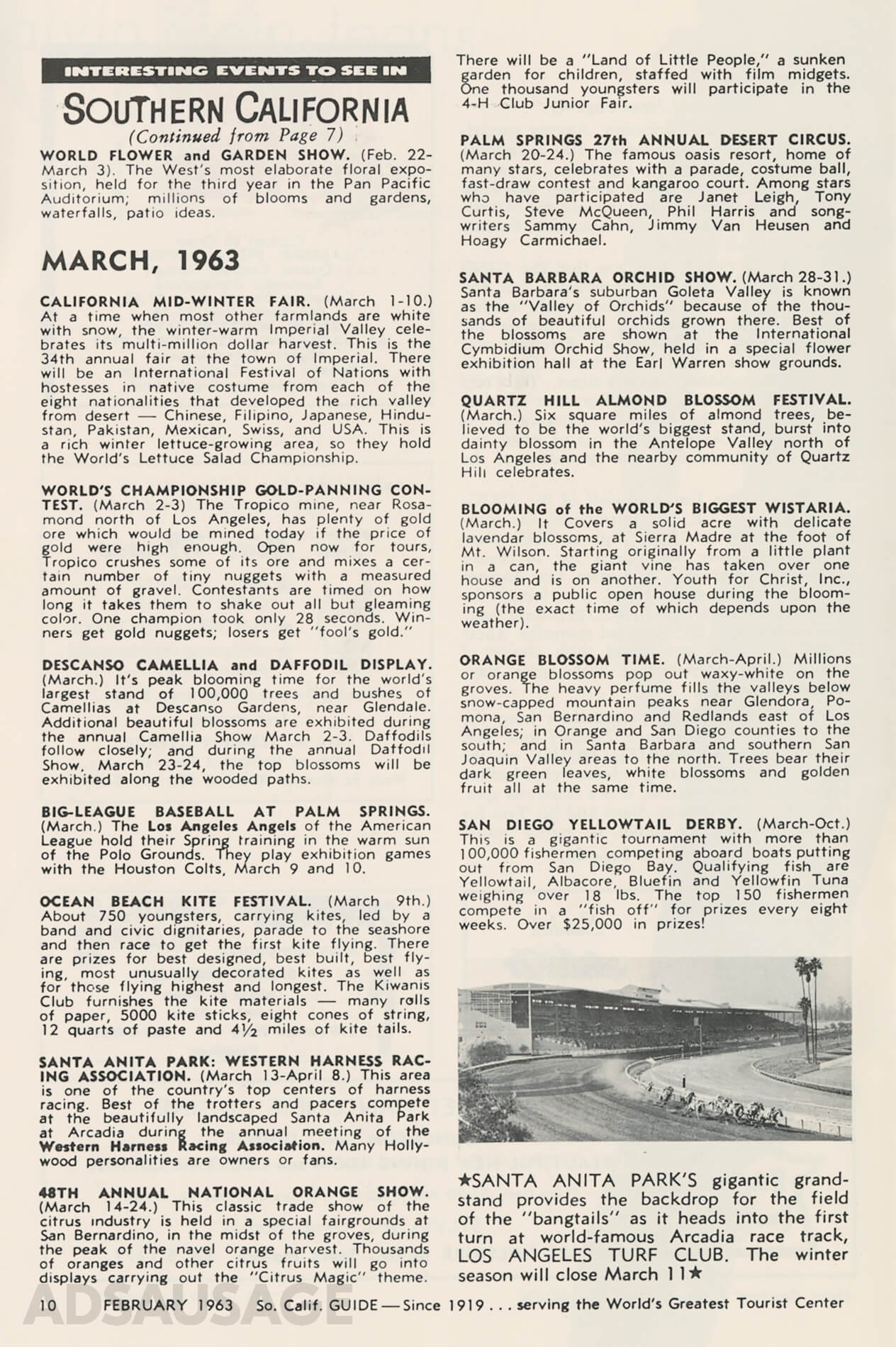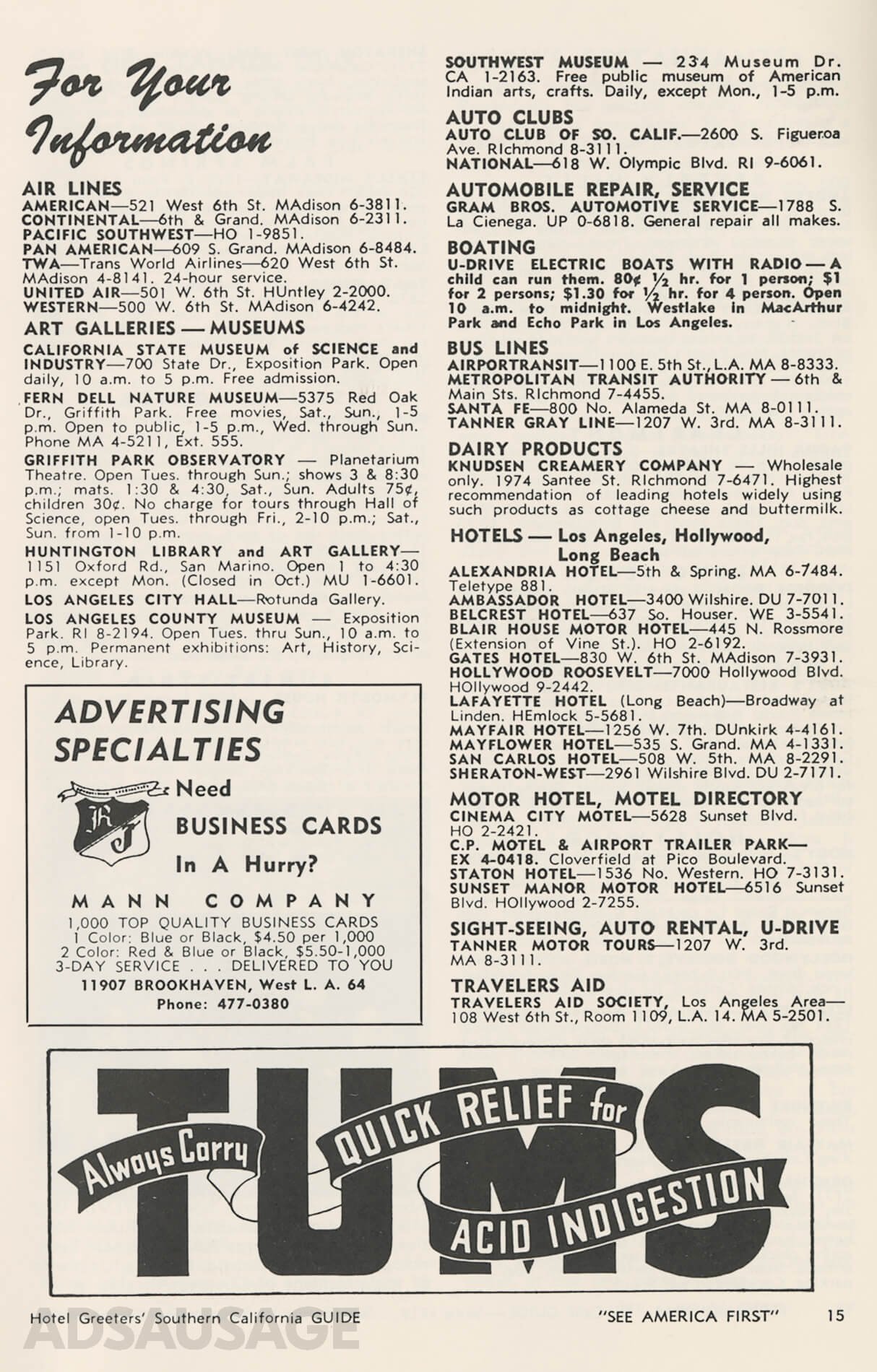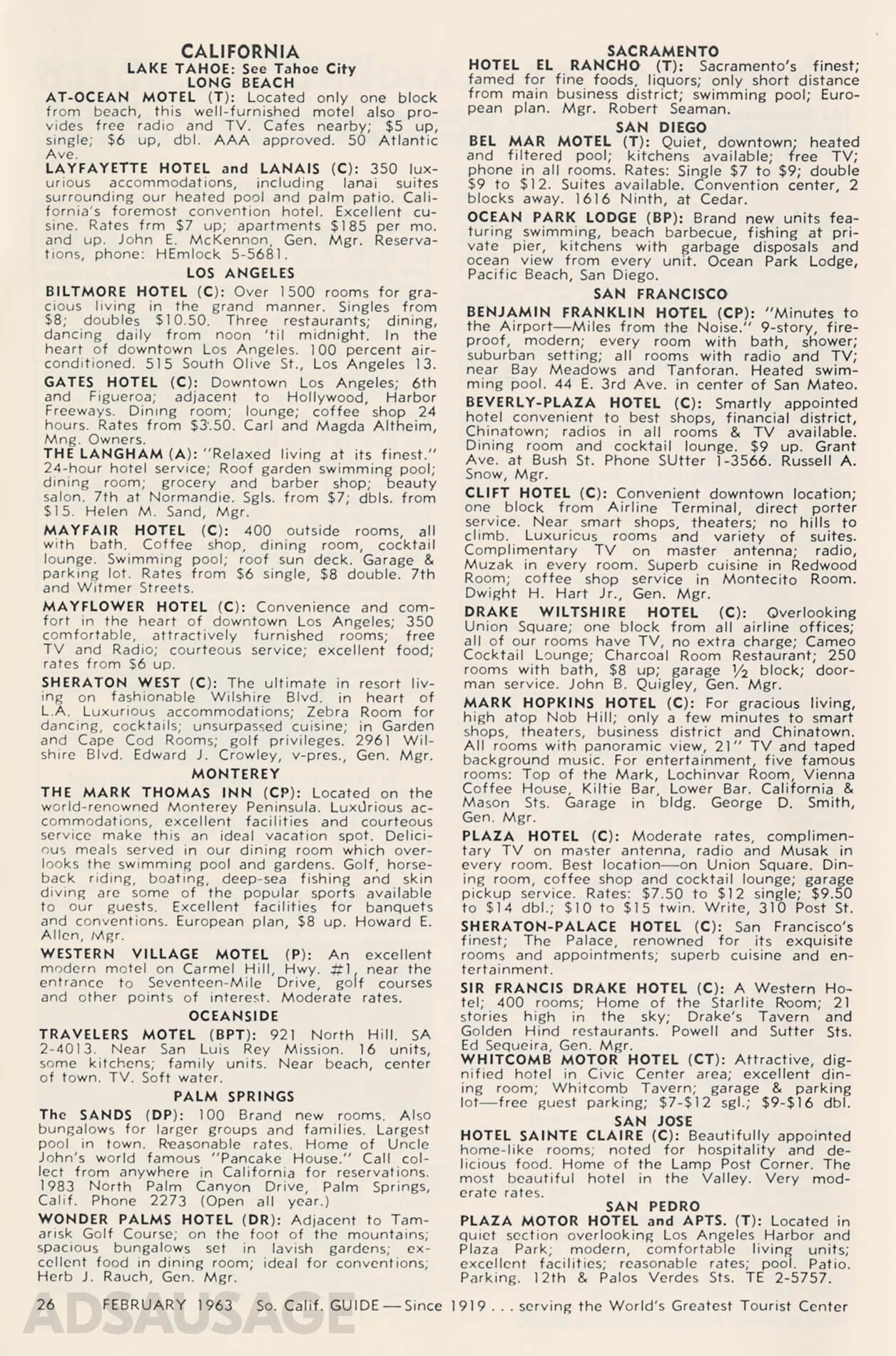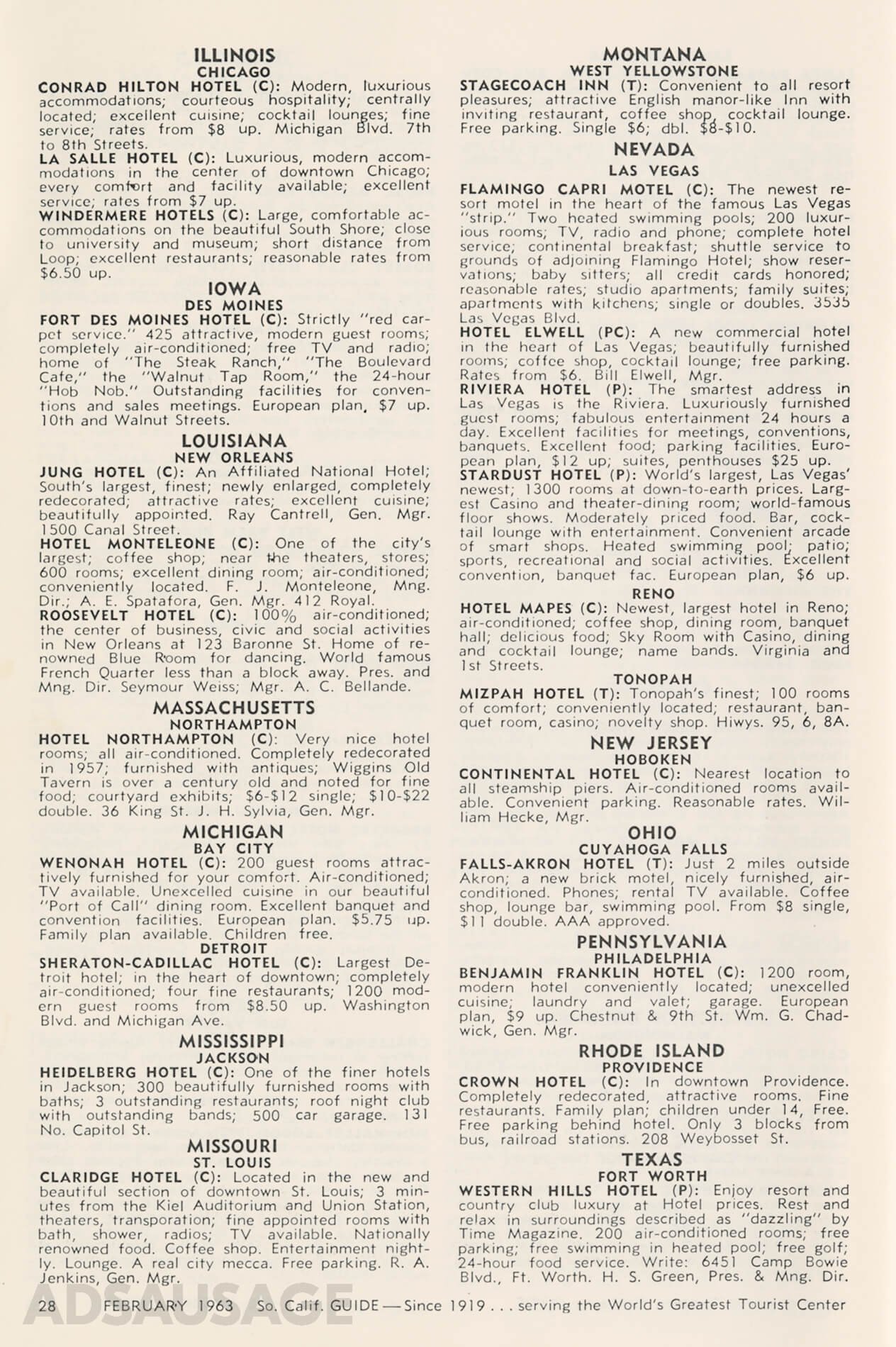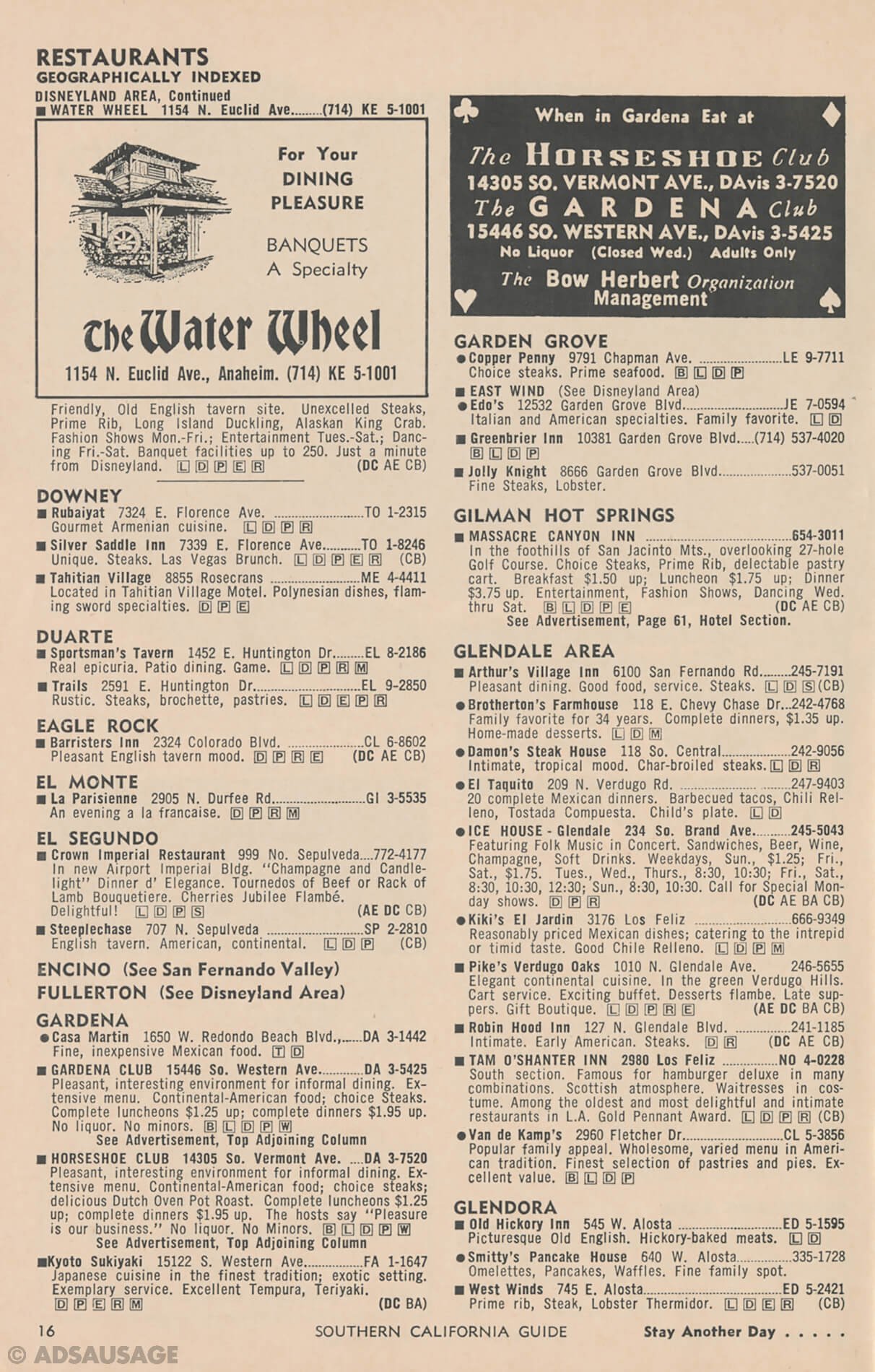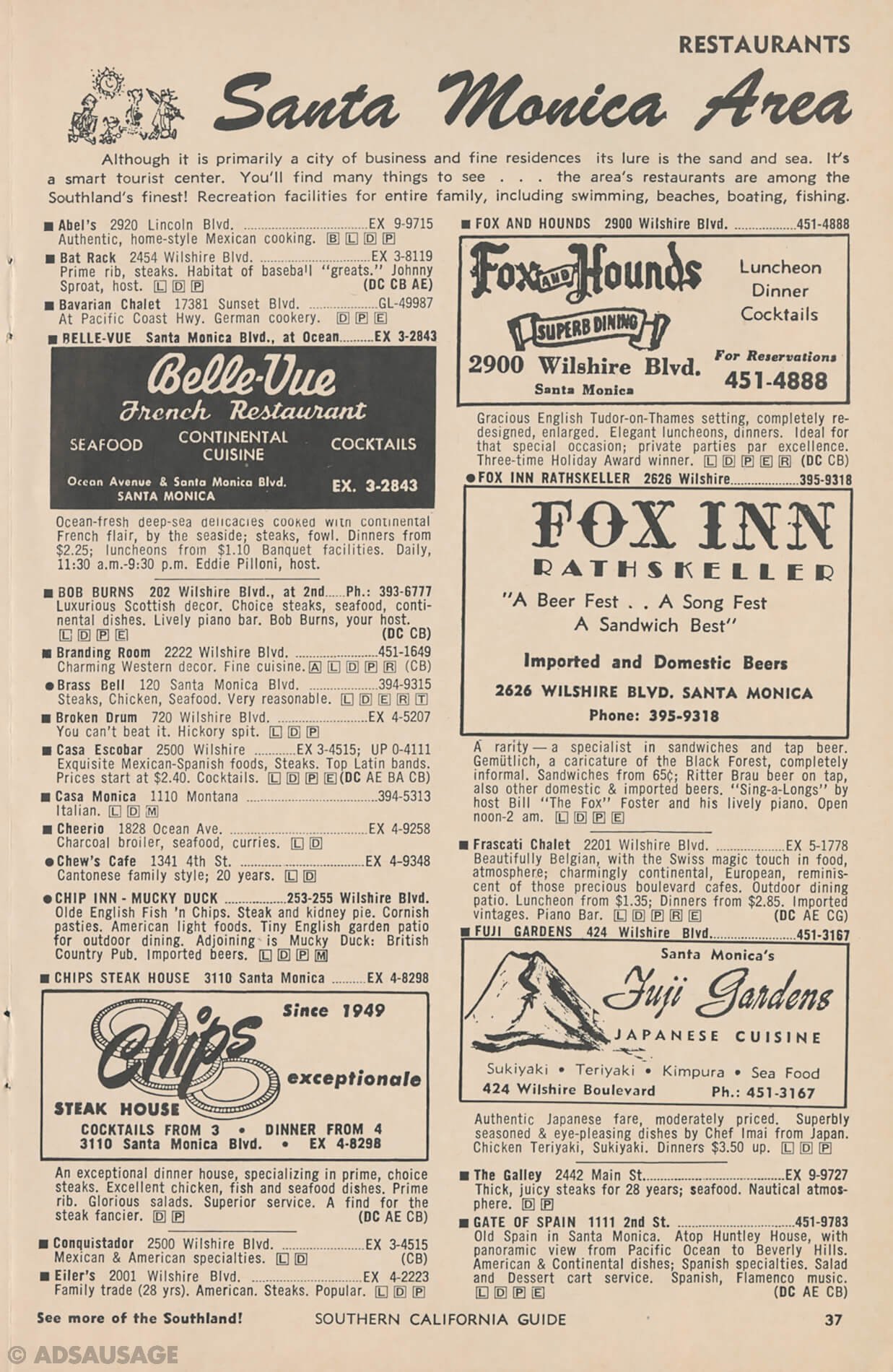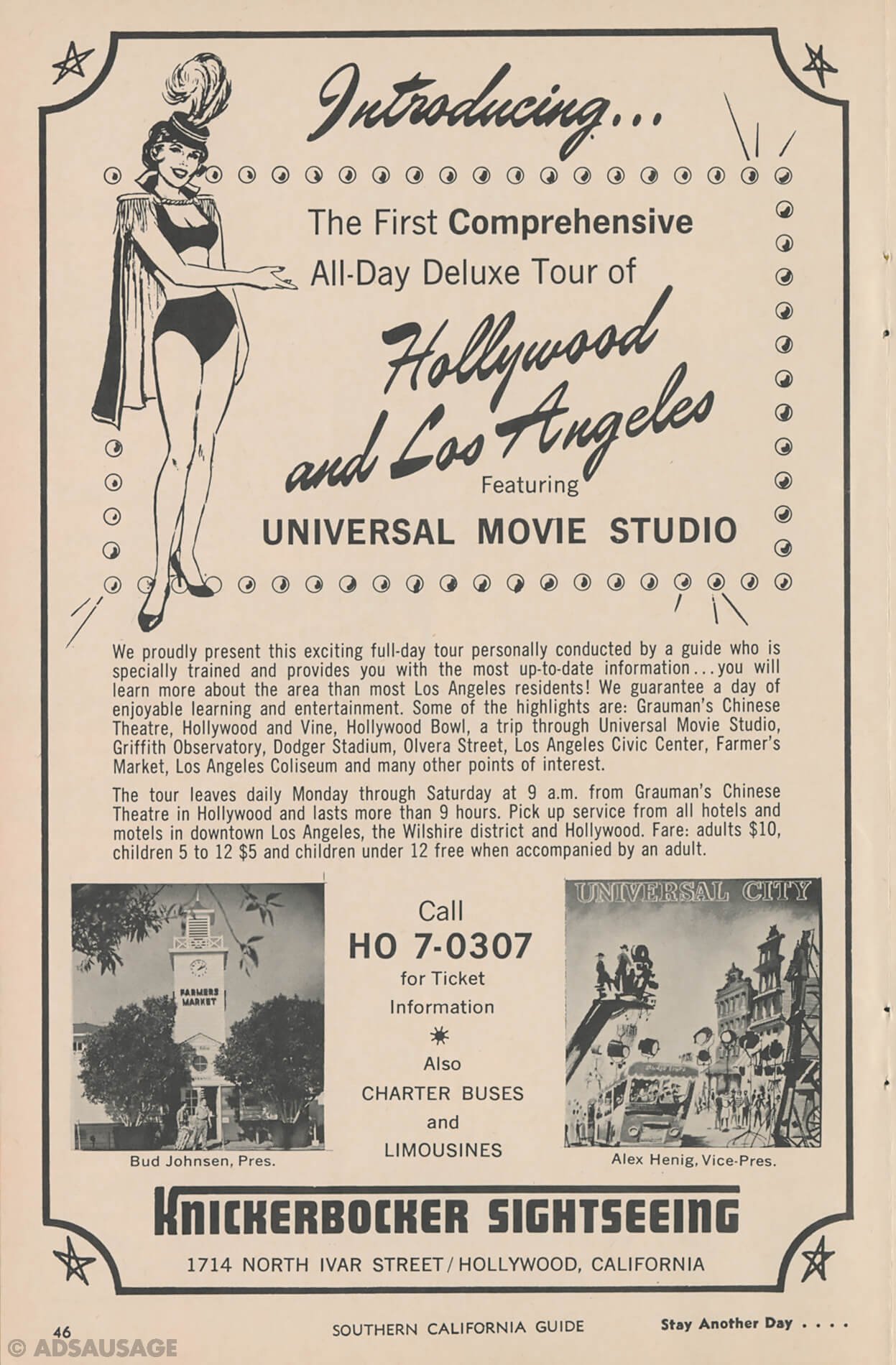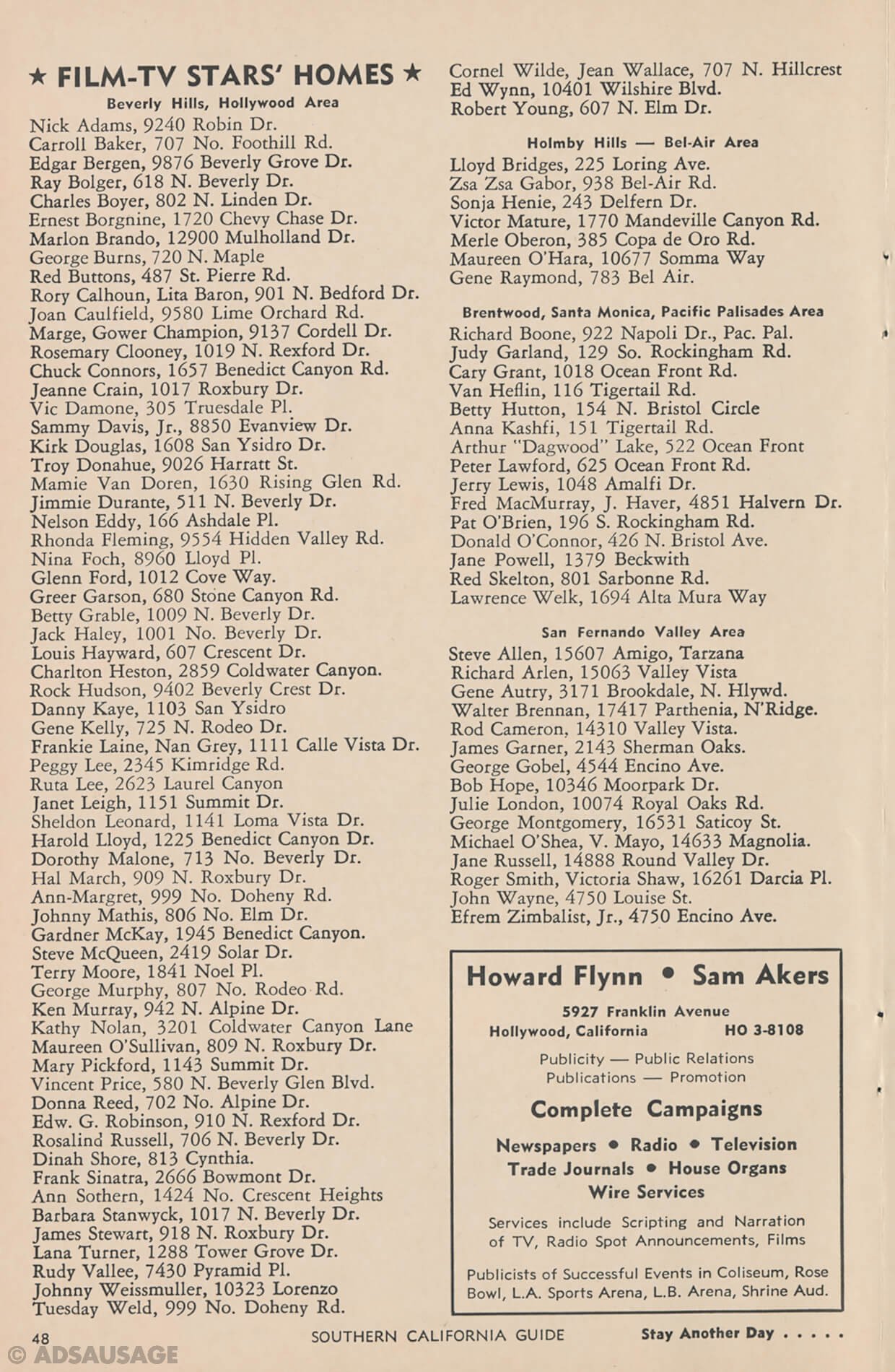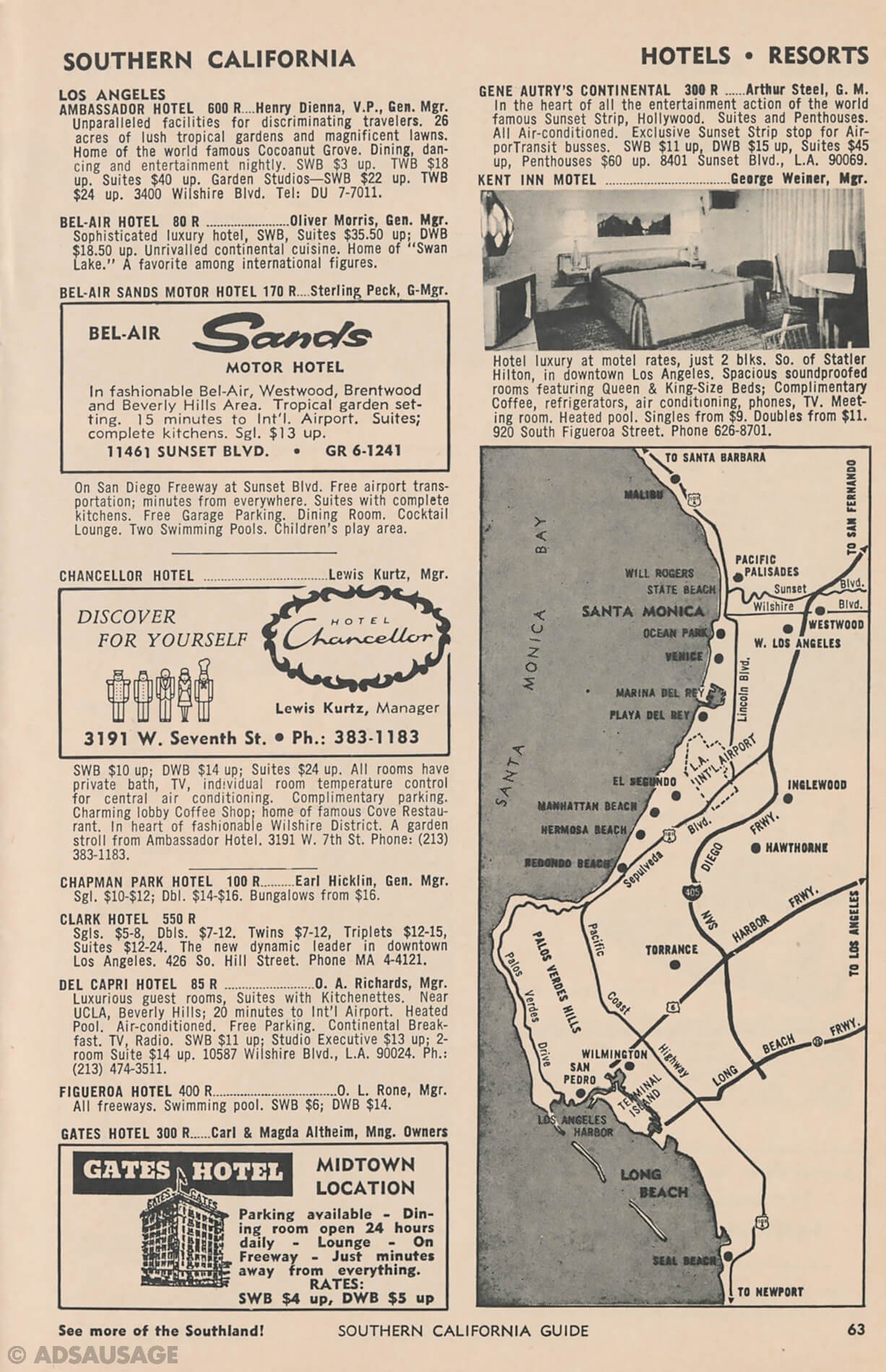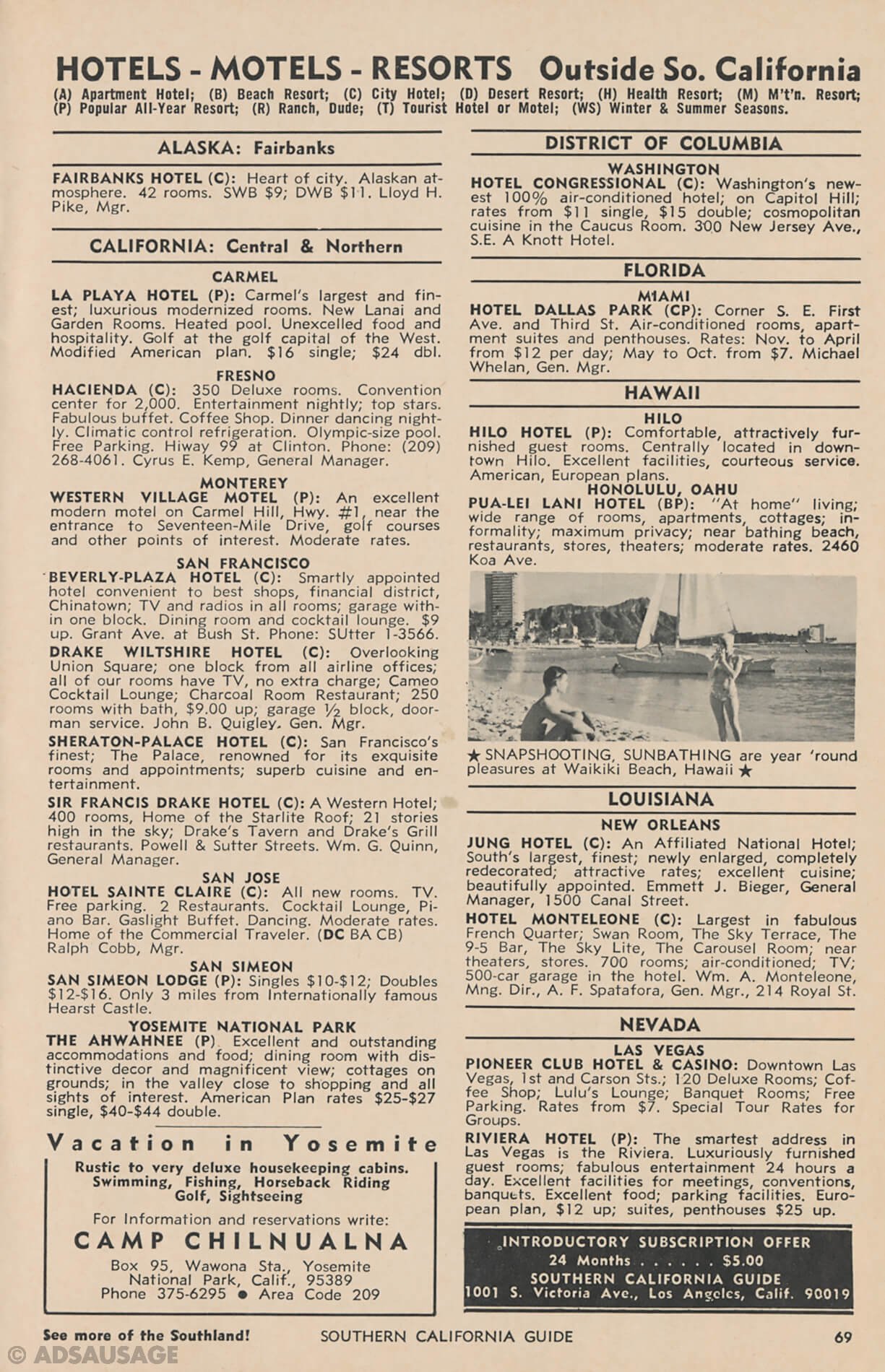“Distributed free at hotels. Ask for one.”
Learn your guest’s full name. Use it on ever possible occasion. It’s the very best way of flattering him into the opinion he’s someone of importance.
- Mrs. Norma MacDonald, president Hotel Greeters Auxiliary, 1939.
Published by a variety of chapters, including the California Information Bureau and Hotel Greeters of America, the travelers’ guide was first available in Nebraska and Iowa, and published by the “dean of hotels”, William Anderson.
The essential booklet initially cost around 14 cents to produce and was considered a labor of love by the Greeters of America. Southern California began publishing in 1922.
In the late 1920s, the Southern California Chapter was led by Bert Tack, who kept an office in the Alexandria Hotel. As part of their goal of keeping visitors happy, the Greeters made an effort to “sell Los Angeles” to Olympic Games visitors in 1932. The former Hotel Continental manager created the “stay a day longer” campaign. Other efforts were made during the war when the head of the national organization appealed to President Roosevelt in 1939 to proclaim 1940, “See America Year.”
On the homefront, the Los Angeles charter — led by former Key magazine manager Louis Ragno — continued in 1952 with its “See America First” campaign (in place since 1926). Rangno would later become editor and publisher of the Southern California Guide — which he purchased with his wife Diane in 1965. The “See America First” slogan became official in 1952 and was geared to the ninety million Americans with vacations on their mind.
Rangno, who passed away in 1984 (eleven years after his wife Diane), made it clear the slogan was not meant solely to discourage foreign travel, but to serve as a reminder that “to know America is to live America.”
A man could travel every day of his life in the United States and every day see something wonderful. So, this promotion will better acquaint the public with the many points of scenic and historic distincion with which America abounds.
And it will serve notice to the world that the right to move about freely is an American freedom, a personal freedom not to be denied.
- American Hotel Association.
And while the guides provided information on the best supper clubs and the nearest florist, it wasn’t afraid to educate. In collaboration with civil defense officials, Hotel Greeters provided hotel guests in 1960 with emergency information on what to do when a siren sounds.
Their son Terry was an child actor and dancer. In 1972, the juvenile hoofer played bass for the The We Five, whose material was billed as folk, rock, and light rock. Rangno was credited as writer on the group’s 1973 single, Bandstand Dancer.
Greeter’s Guide, 1922
San Francisco Guide, 1952
Guide, 1953
Guide, 1963
Guide, 1966

